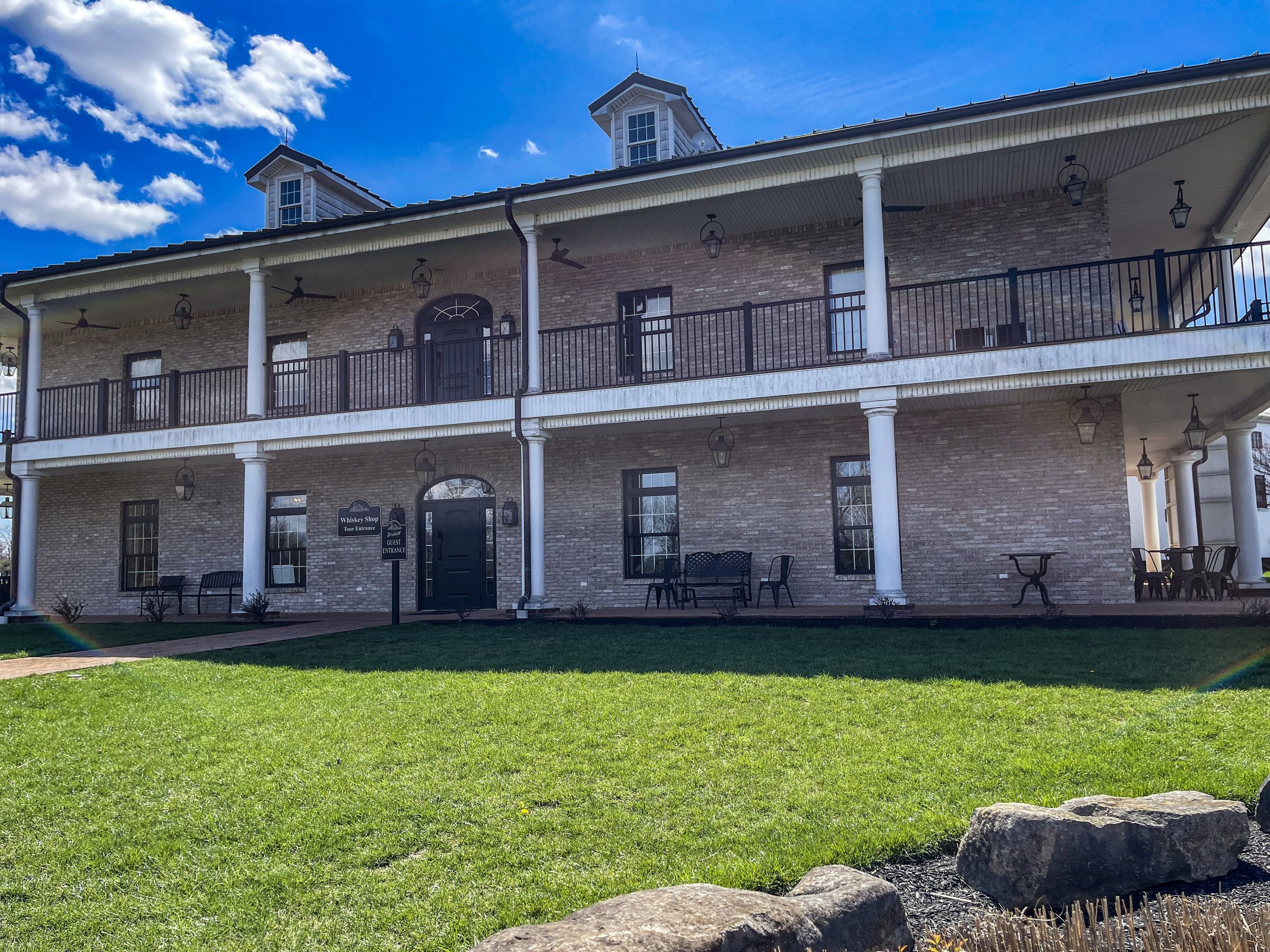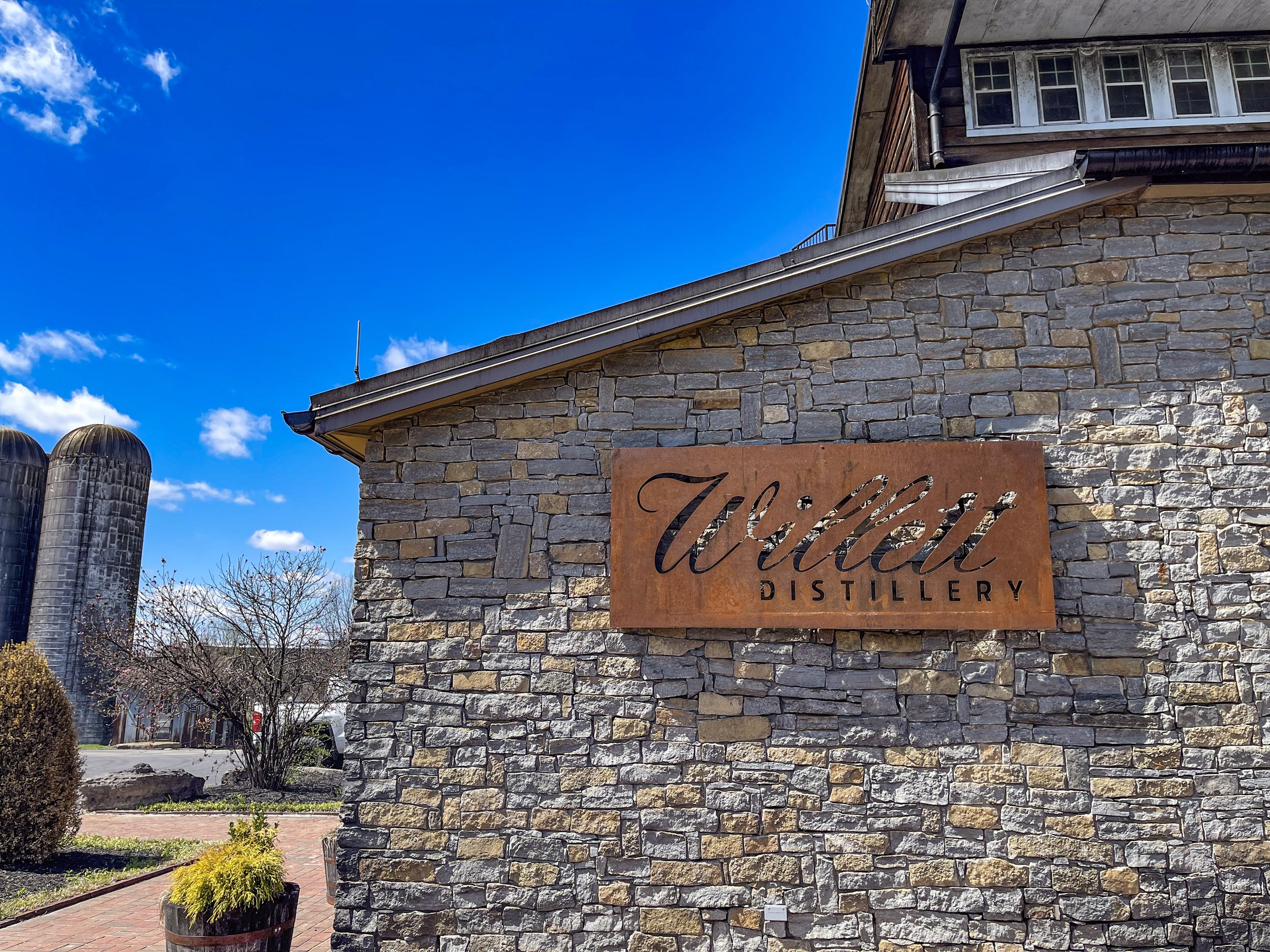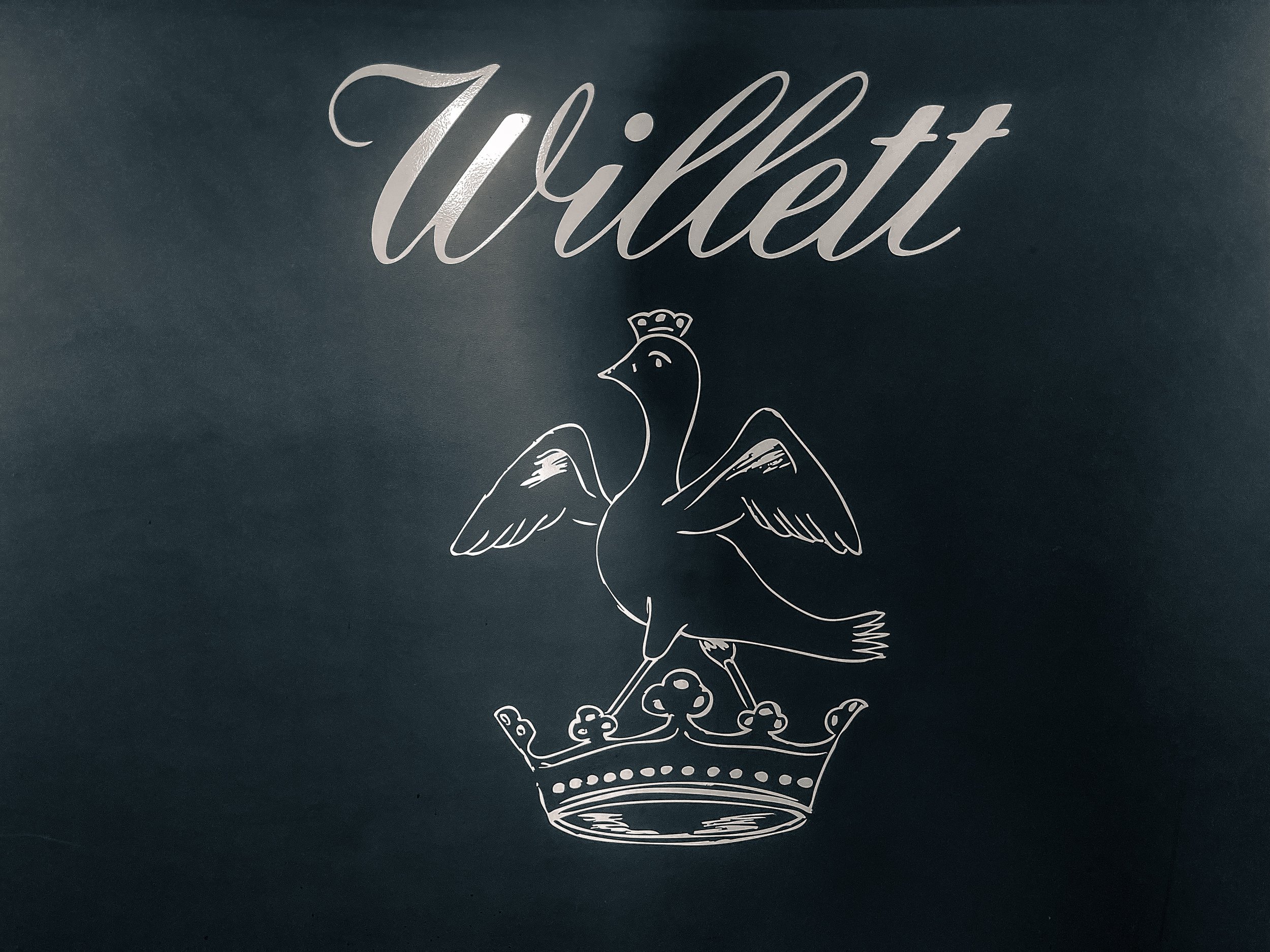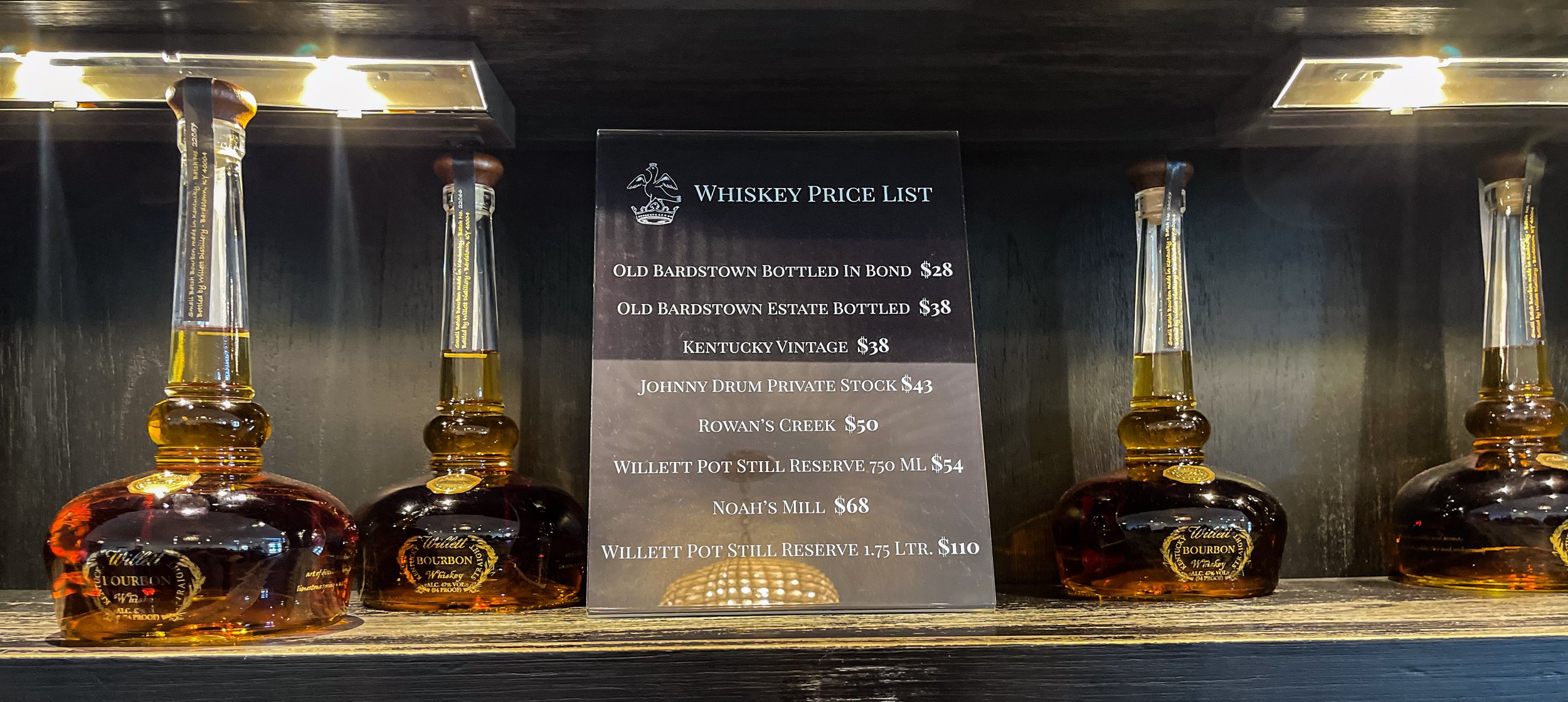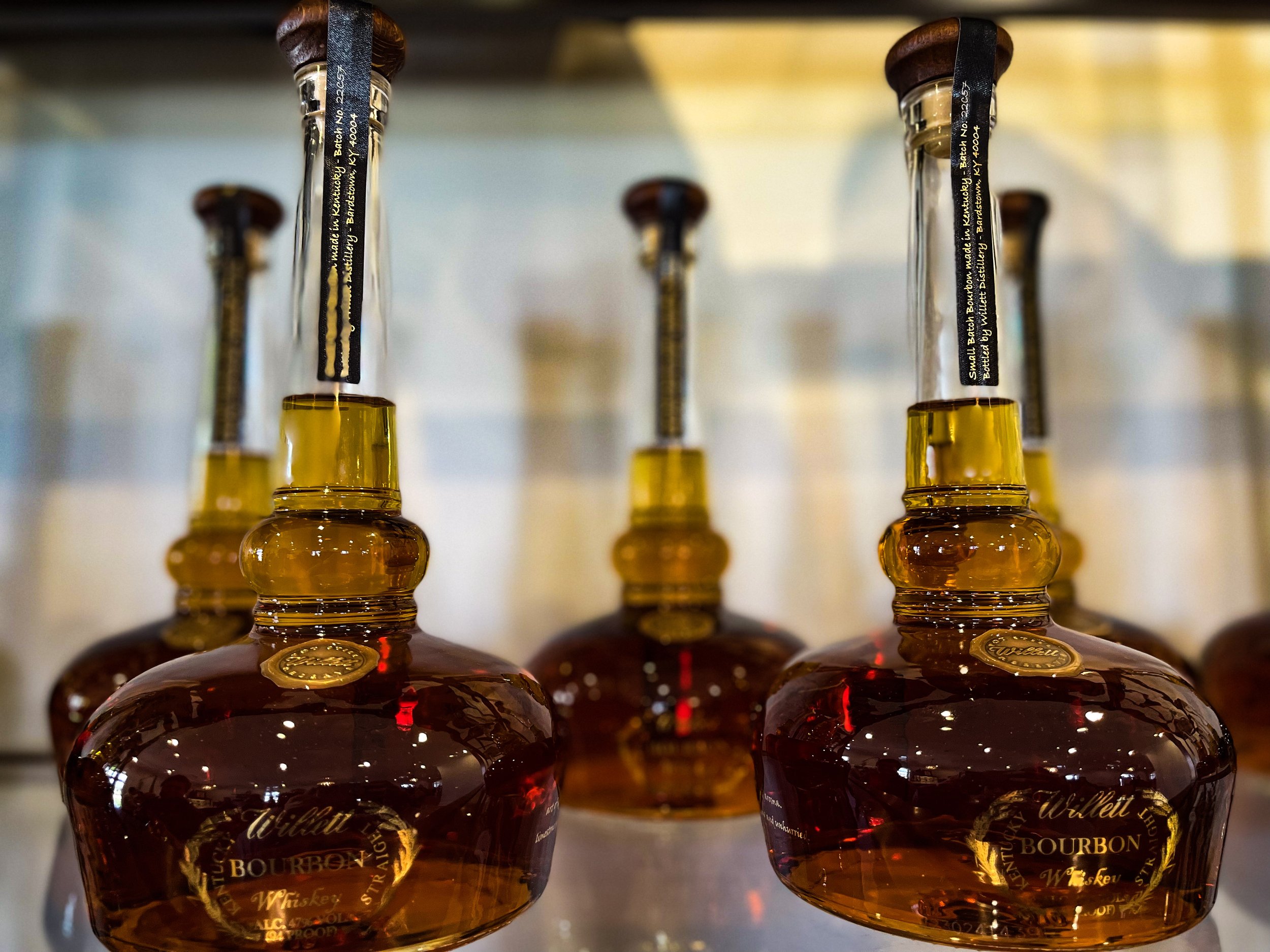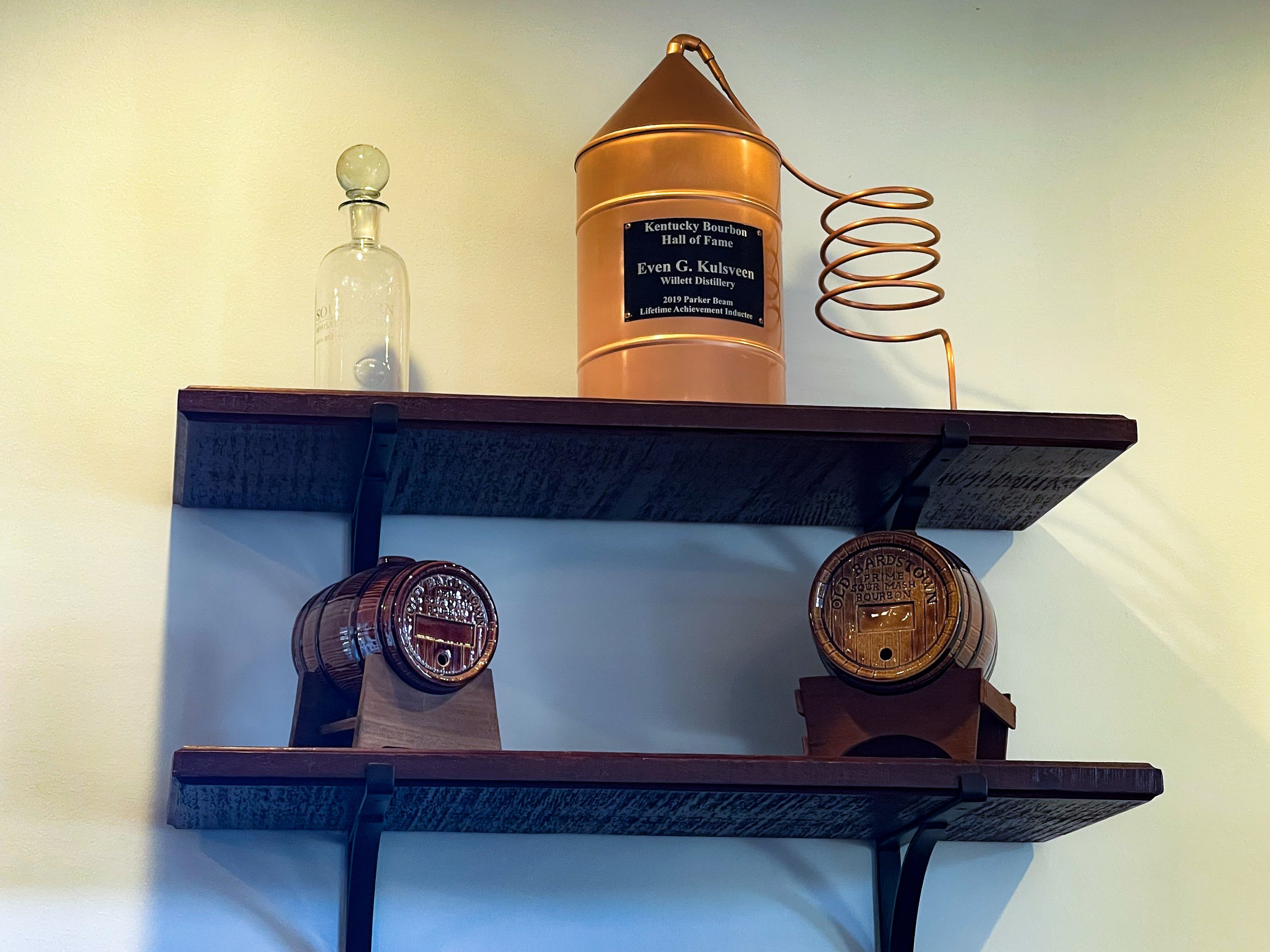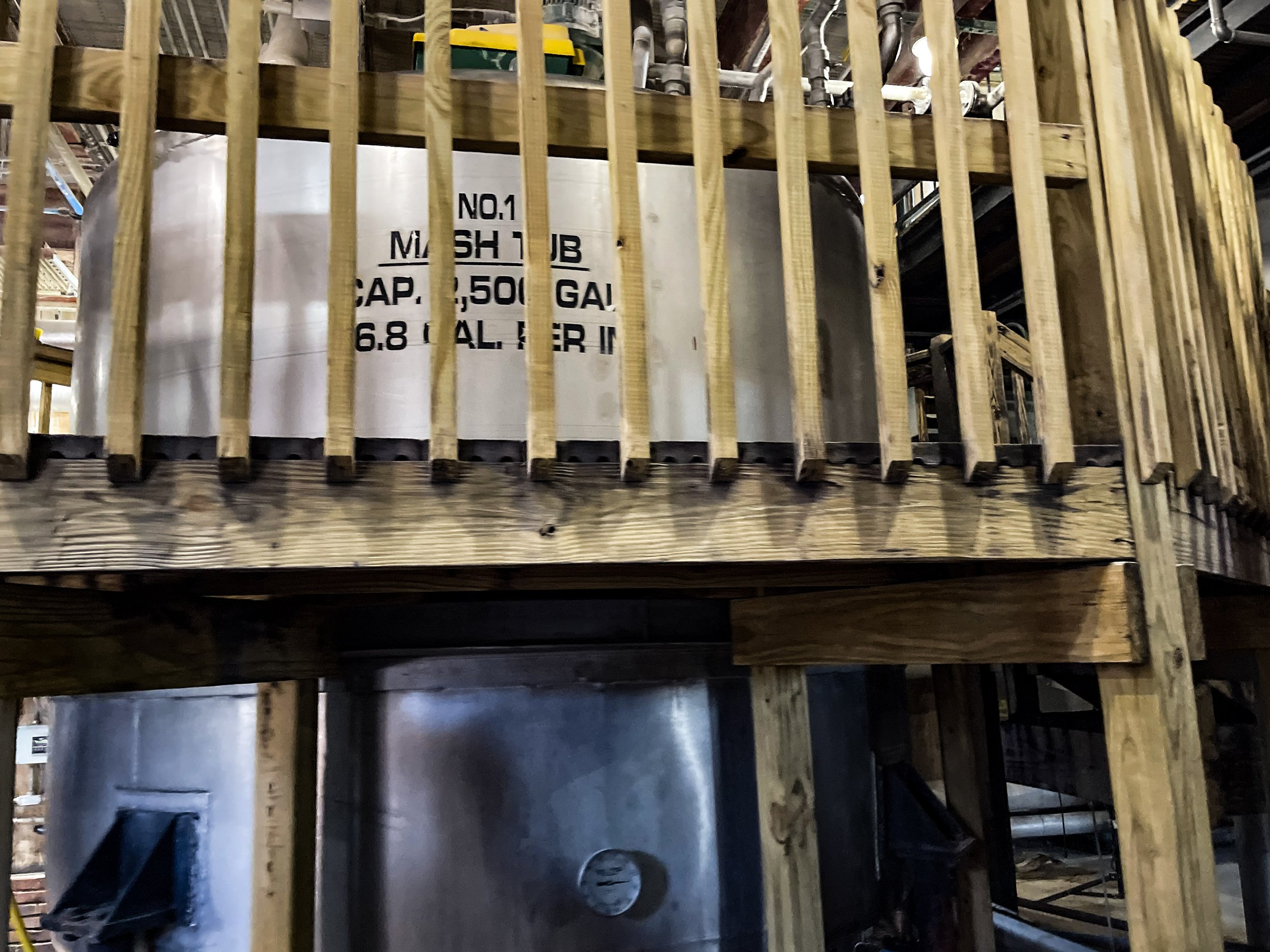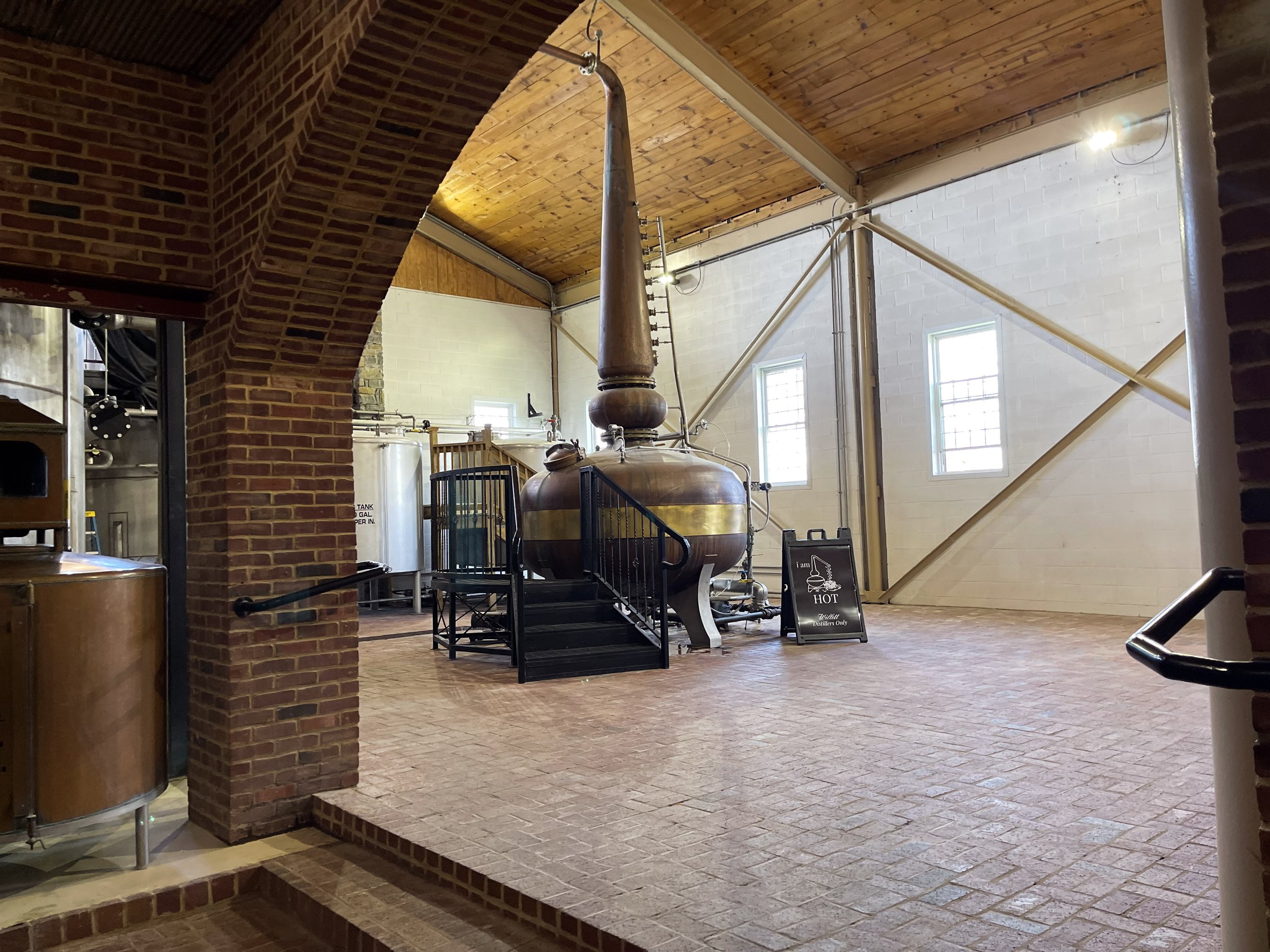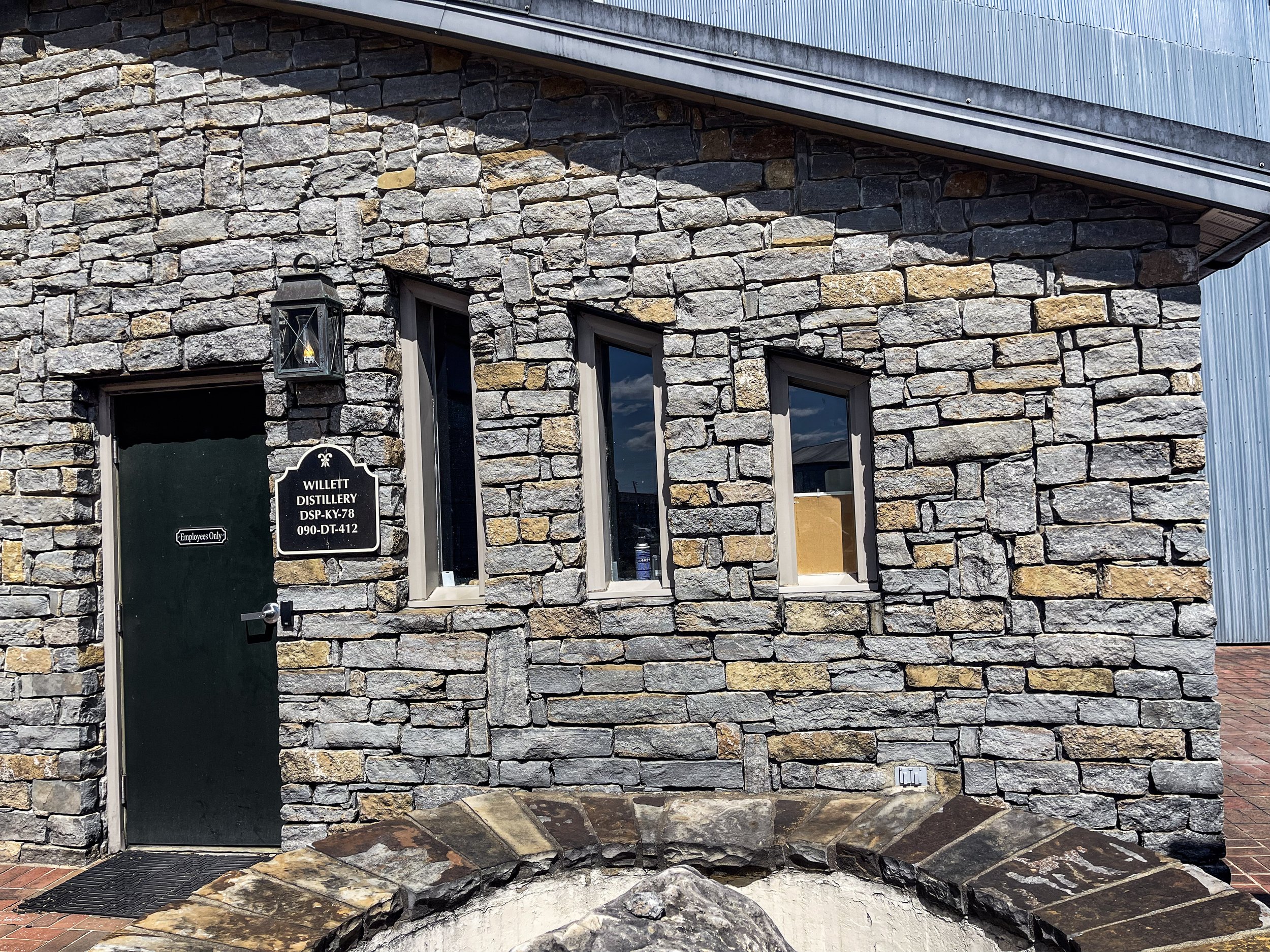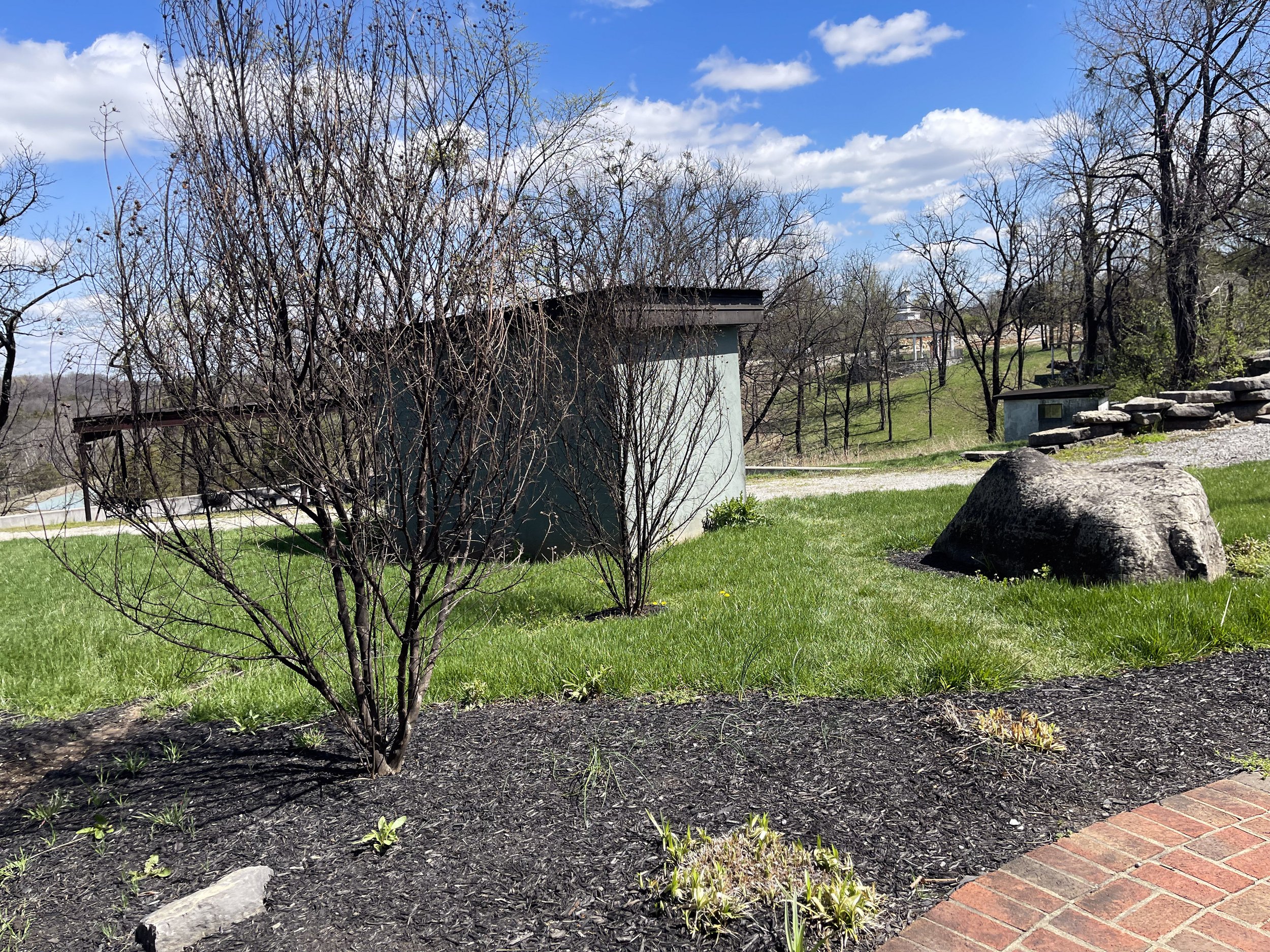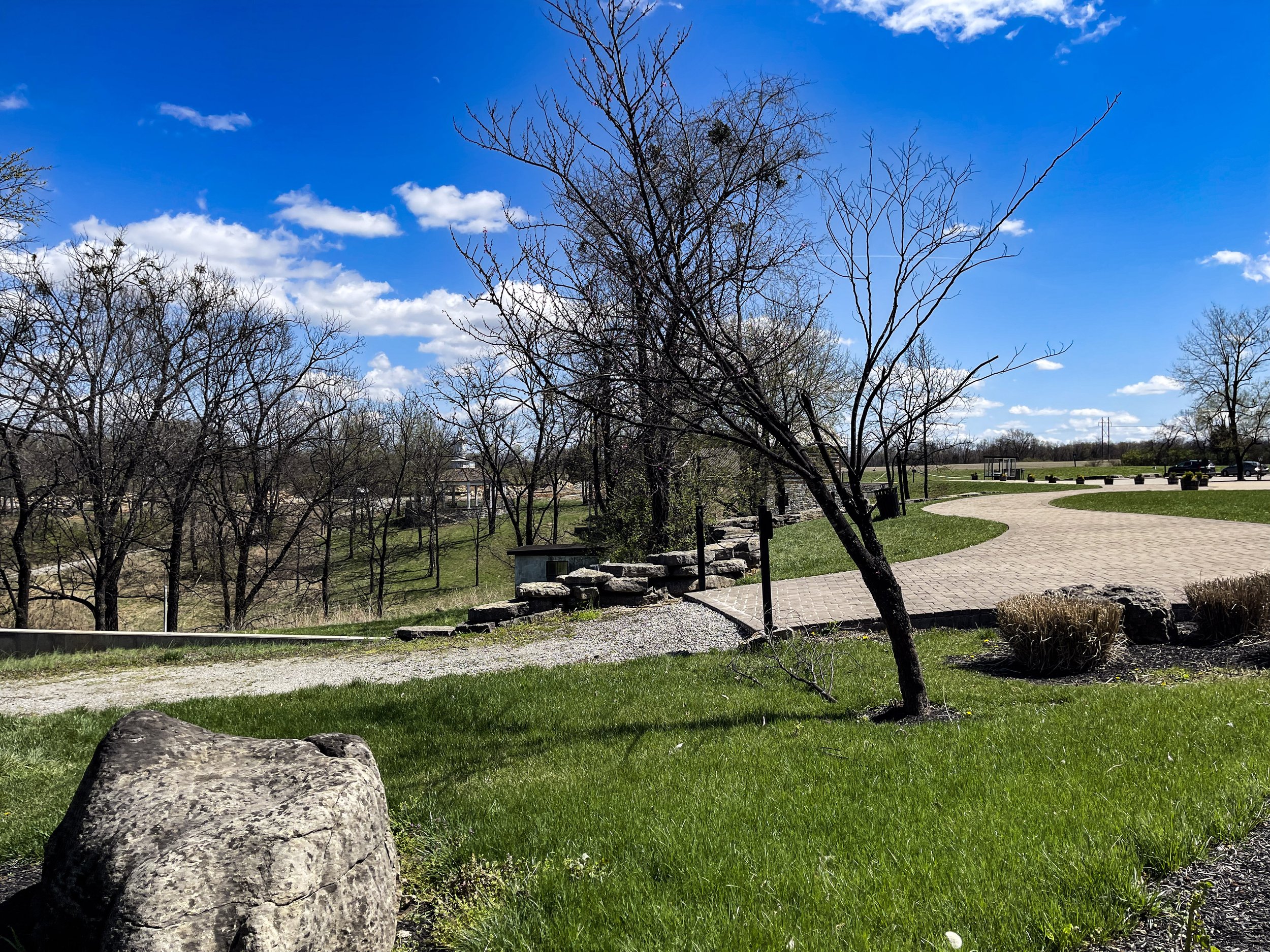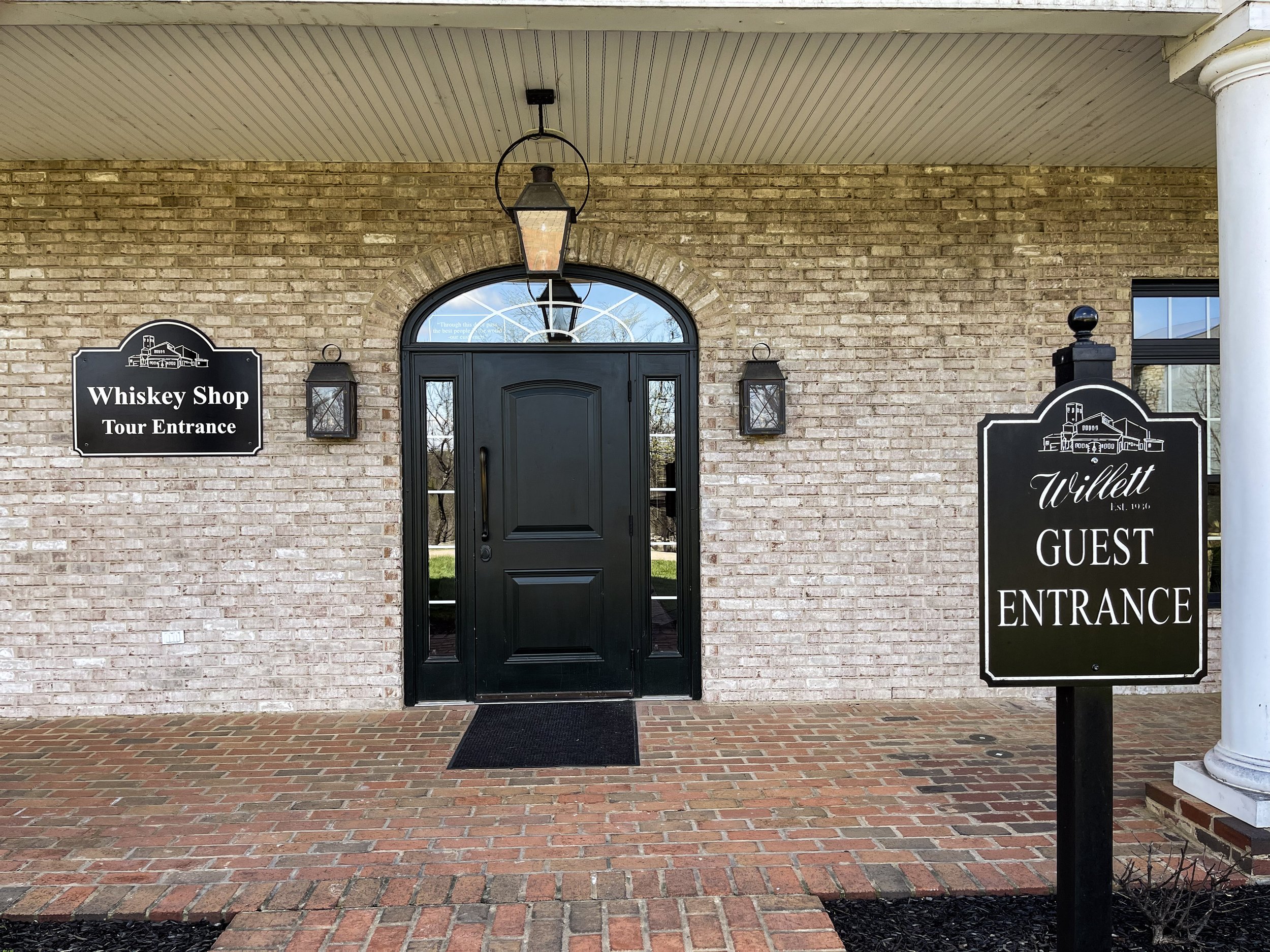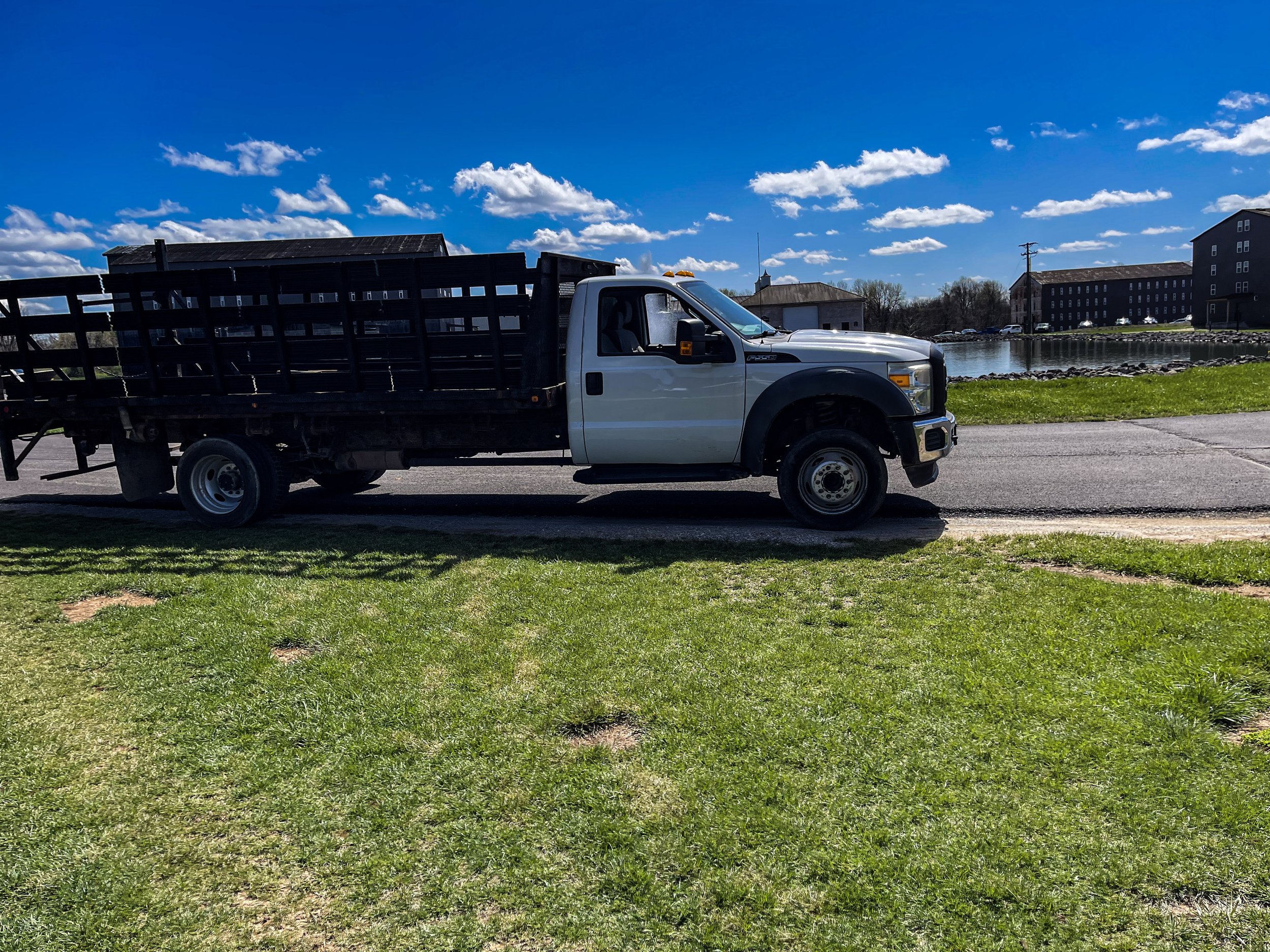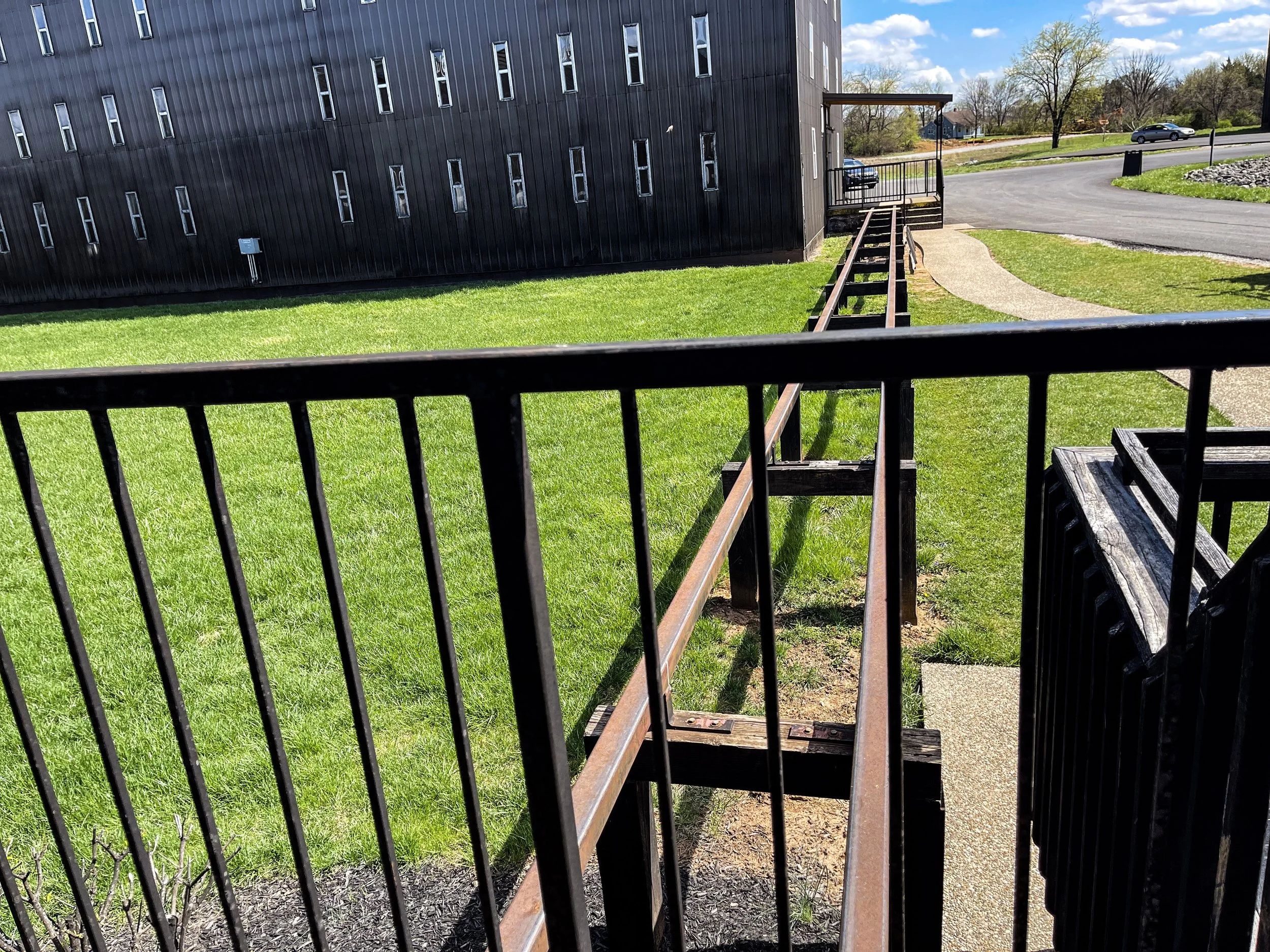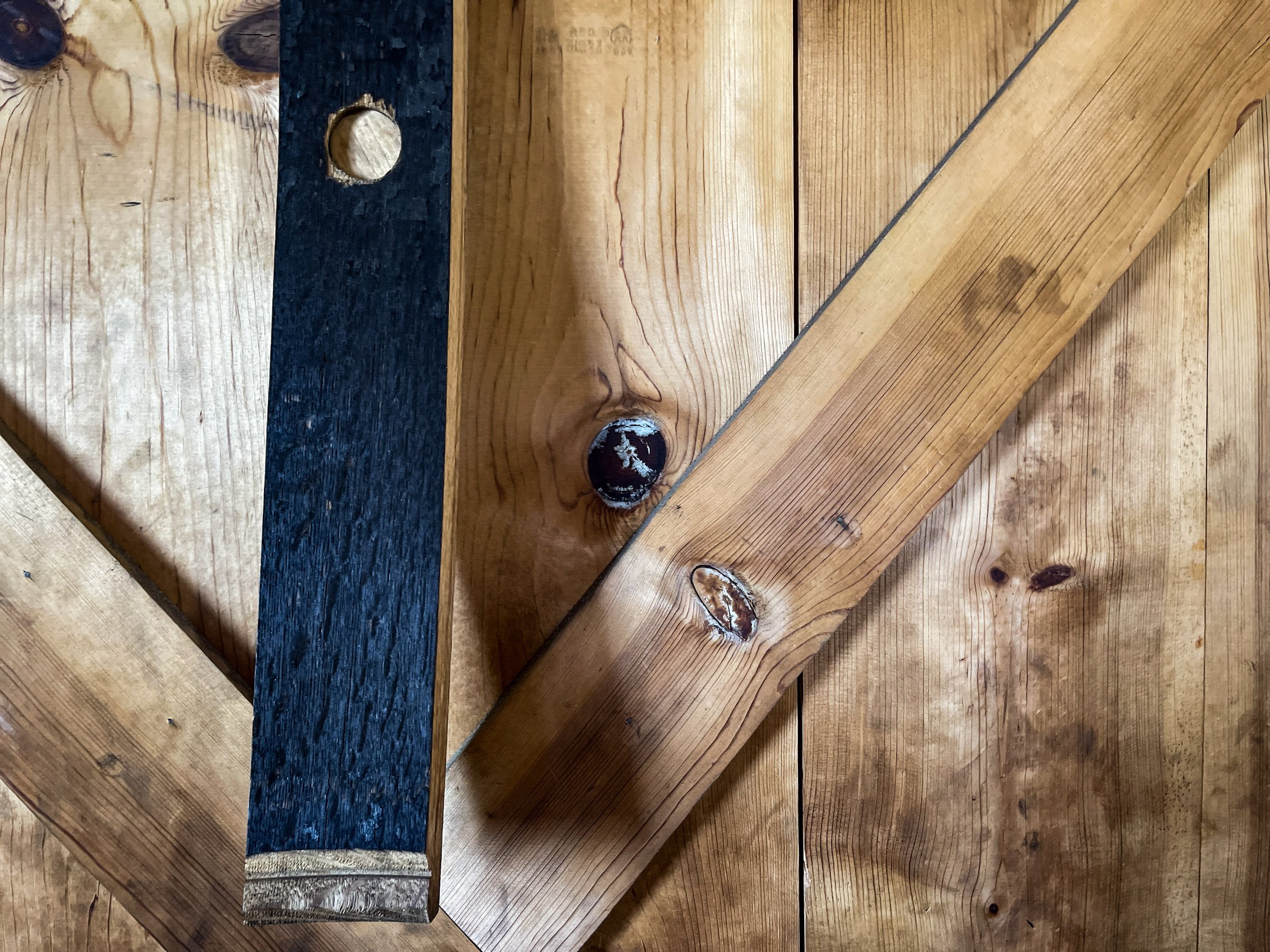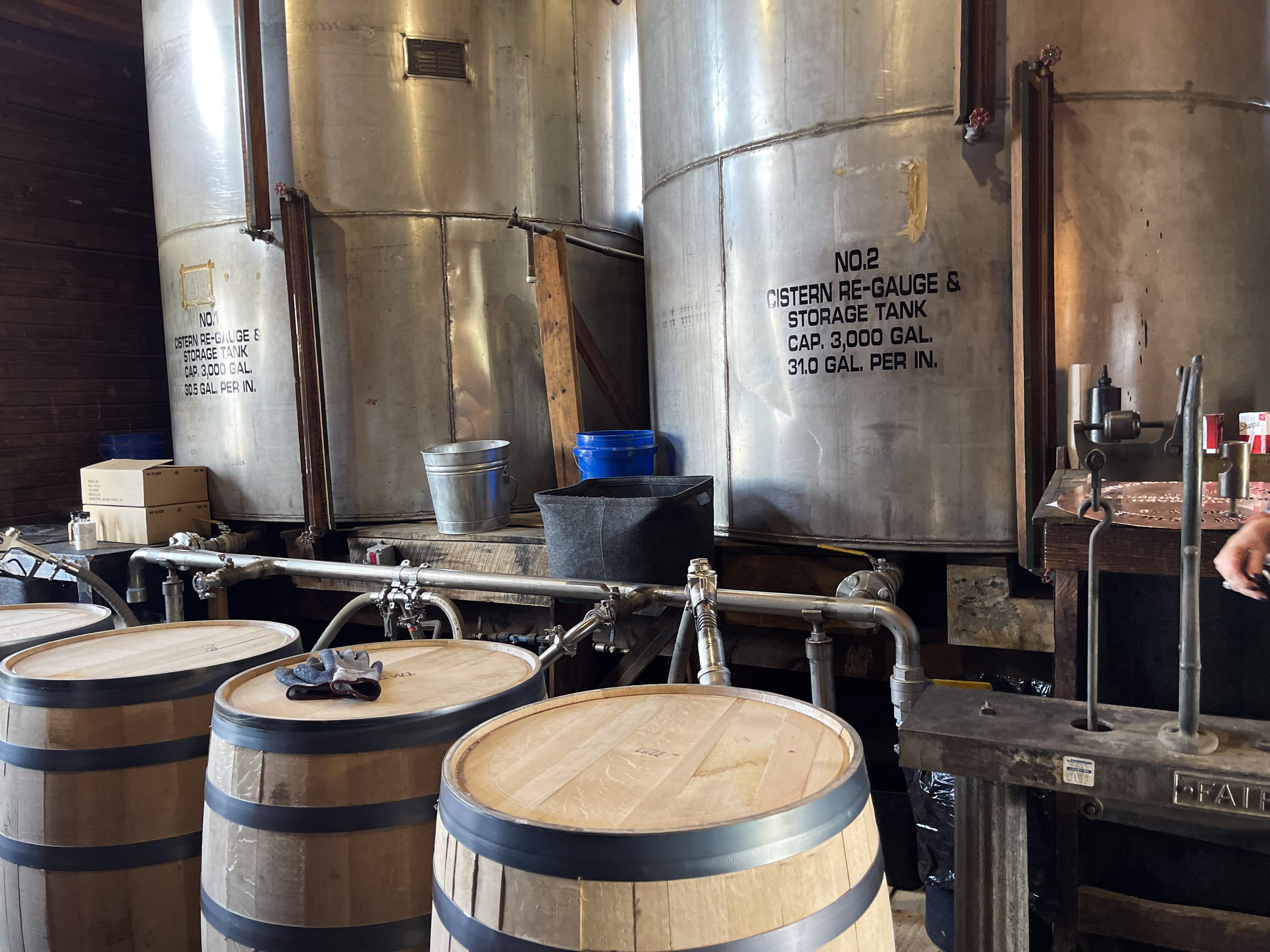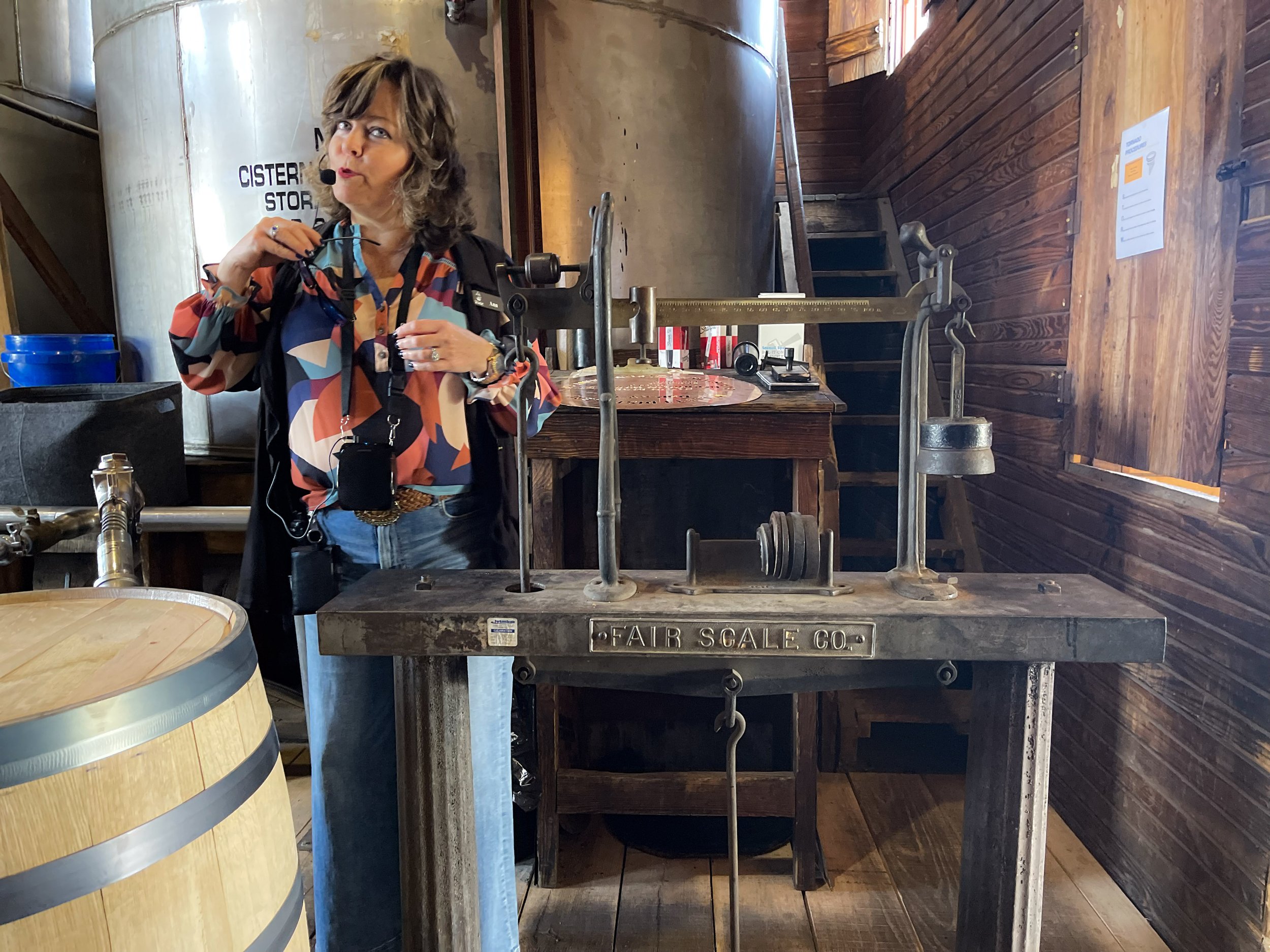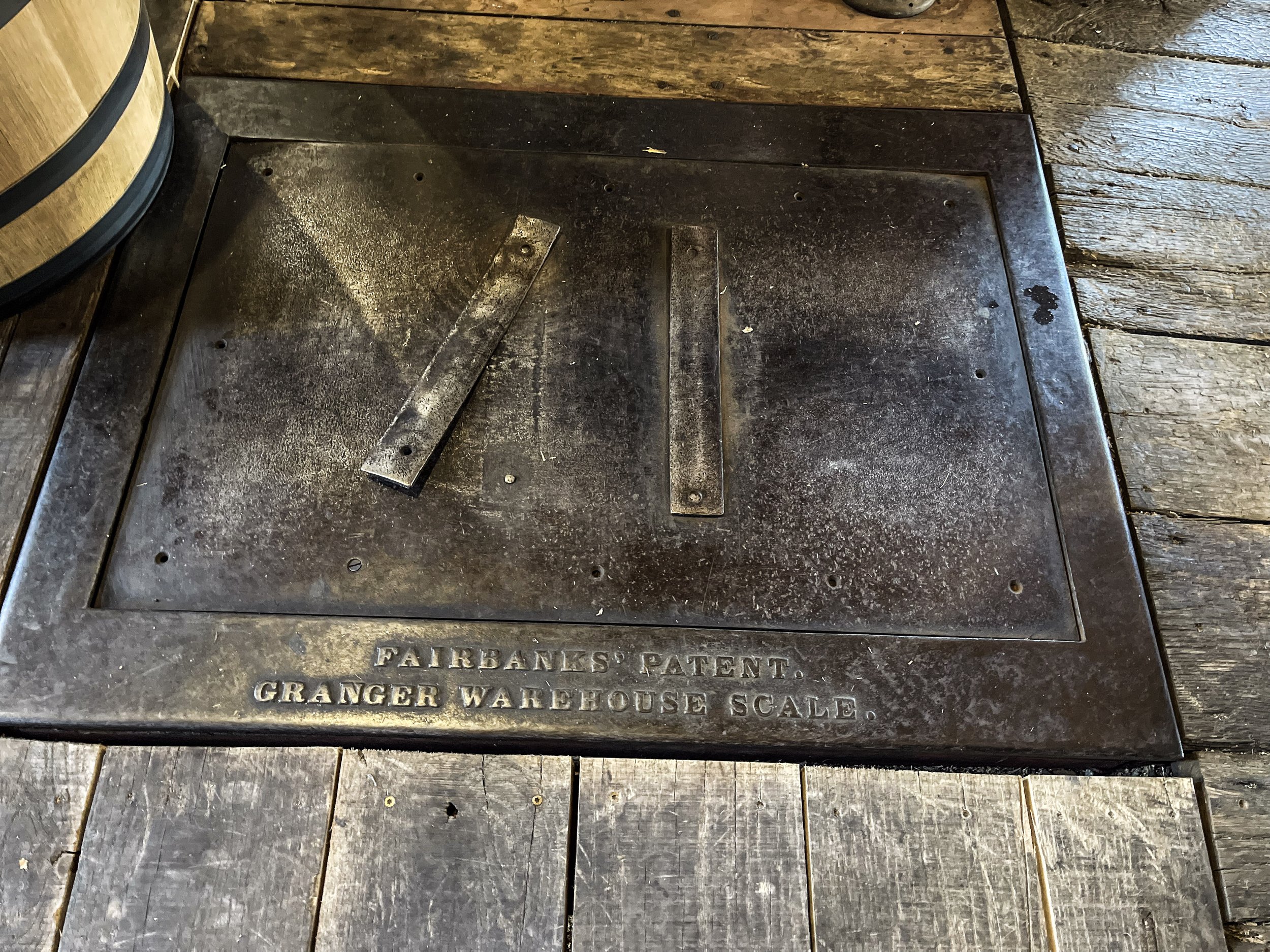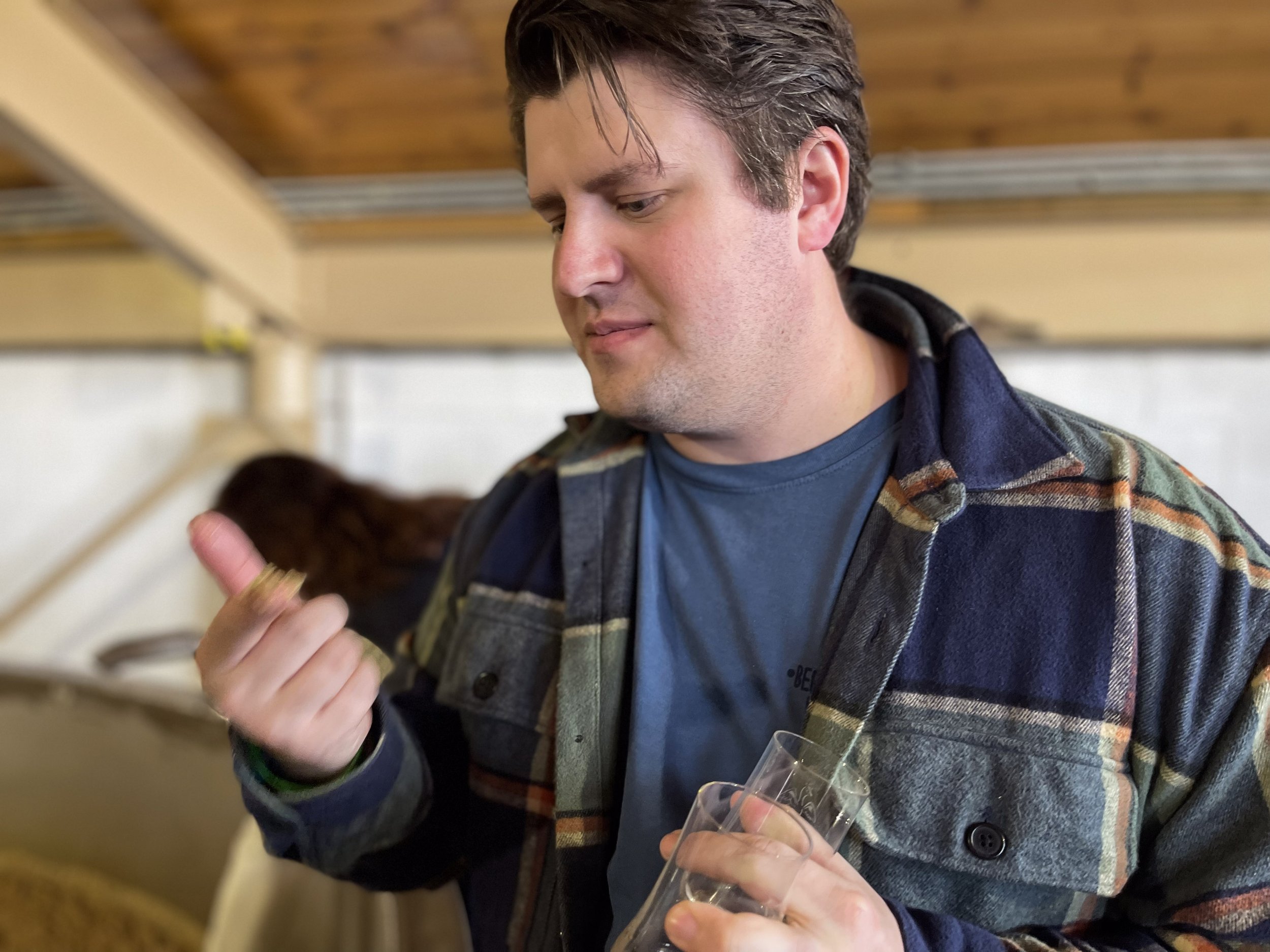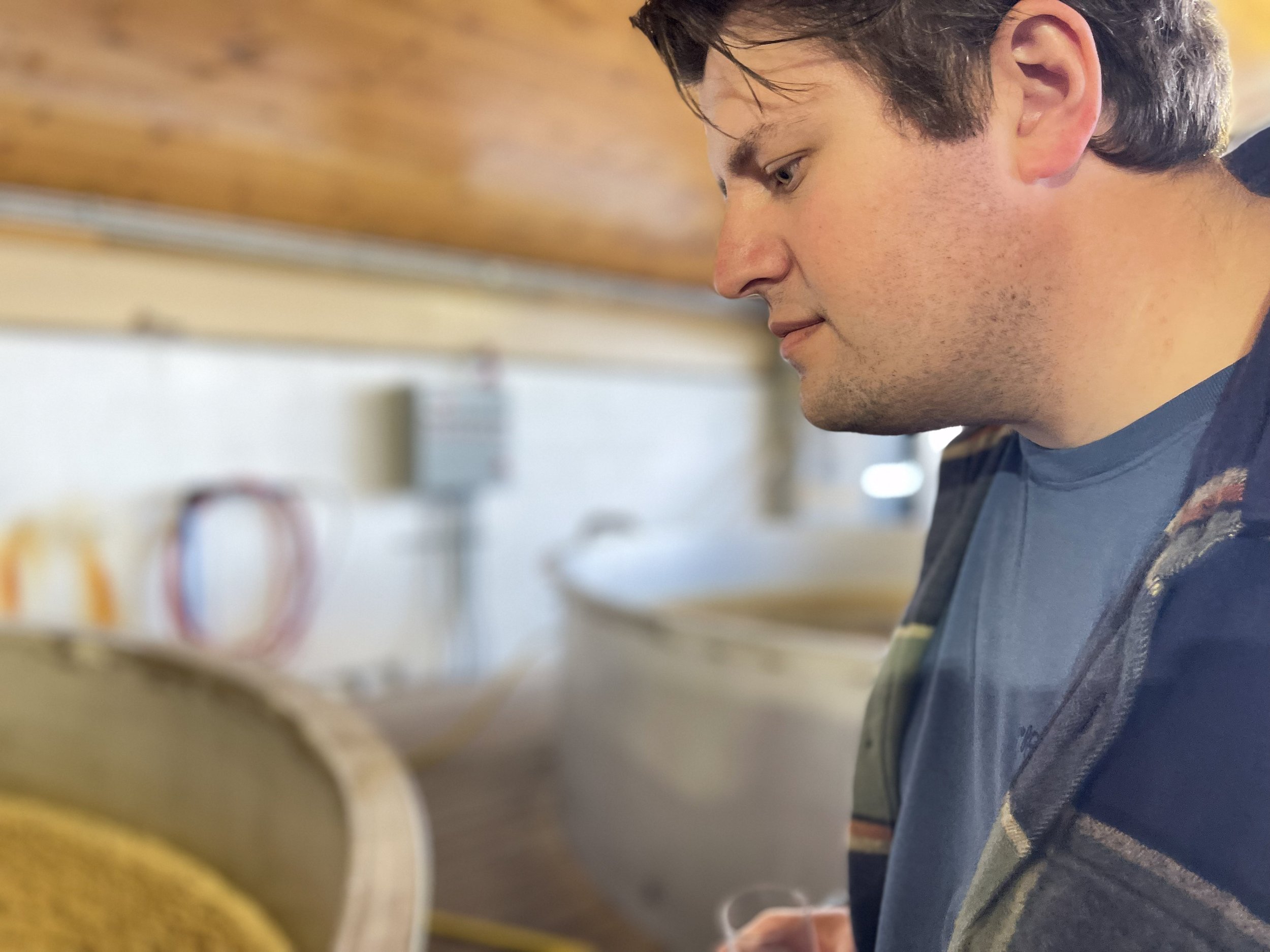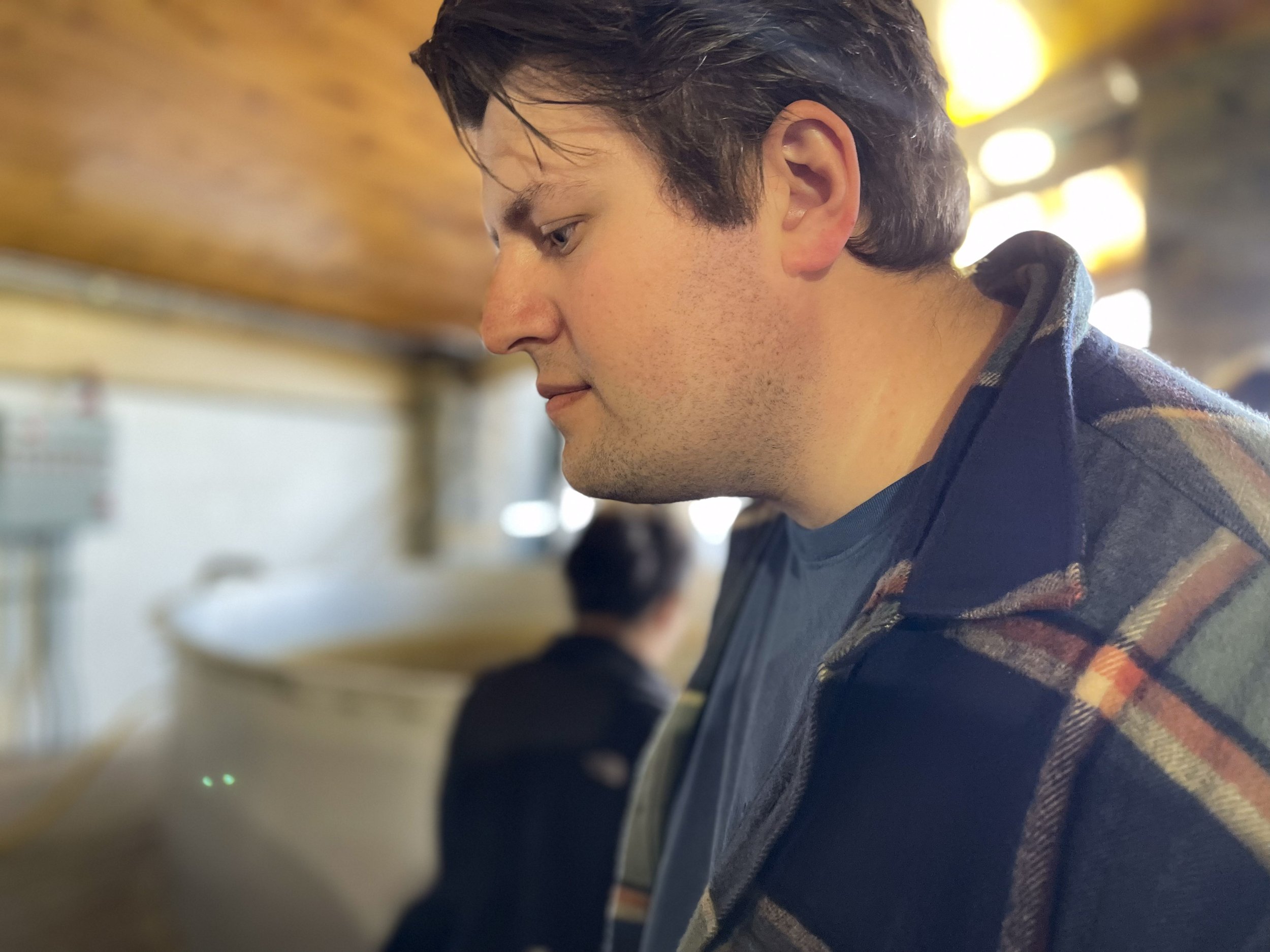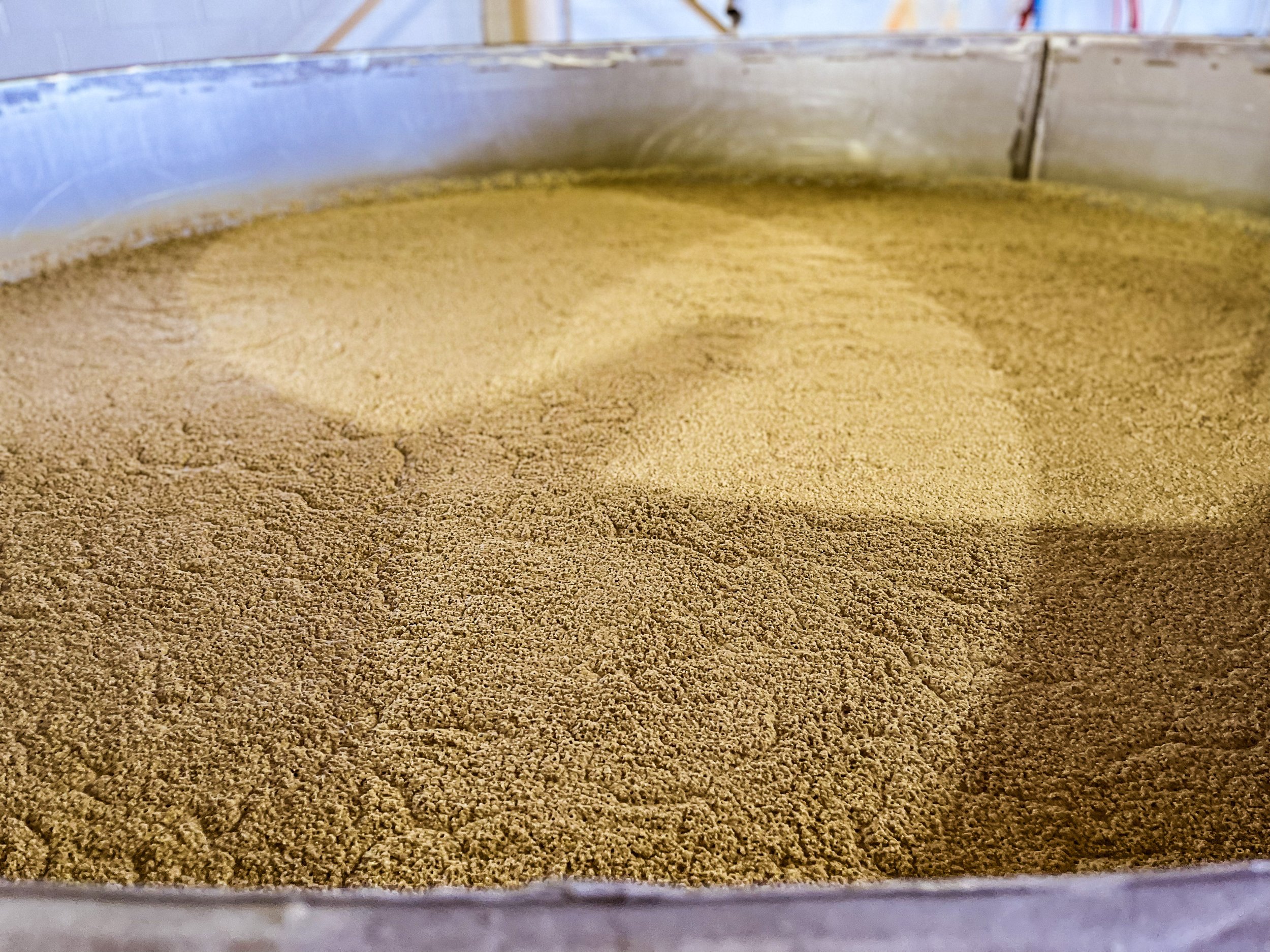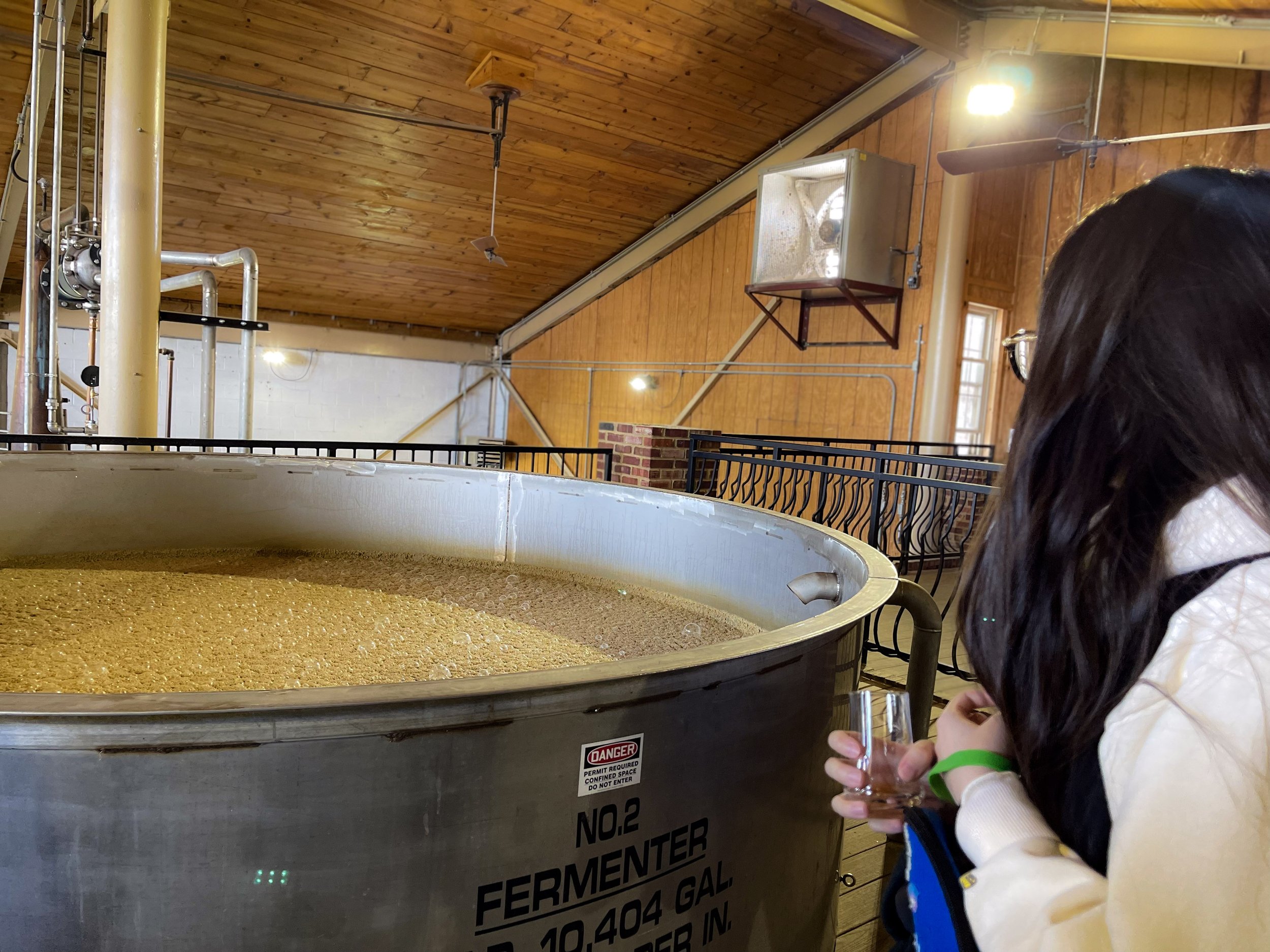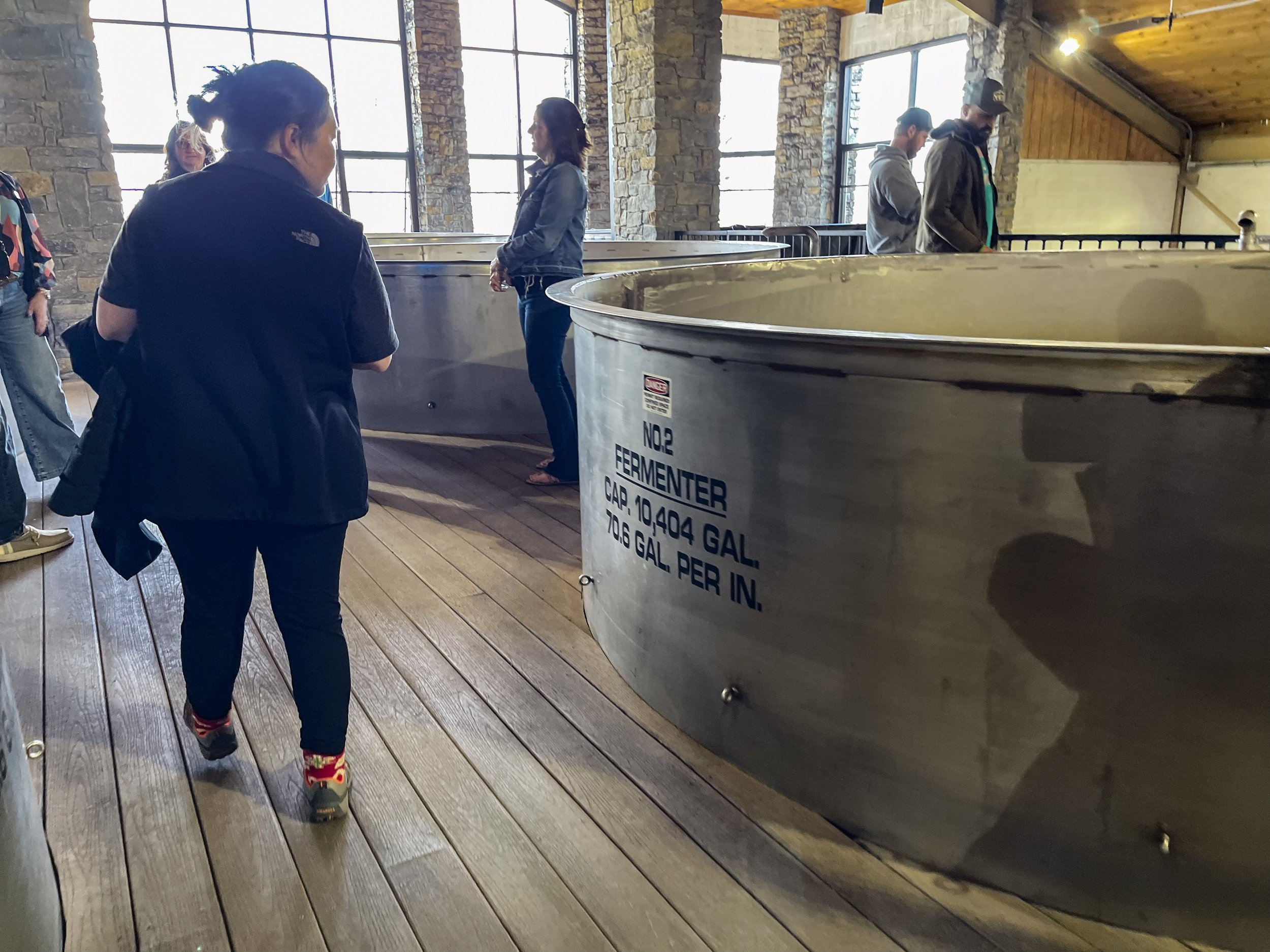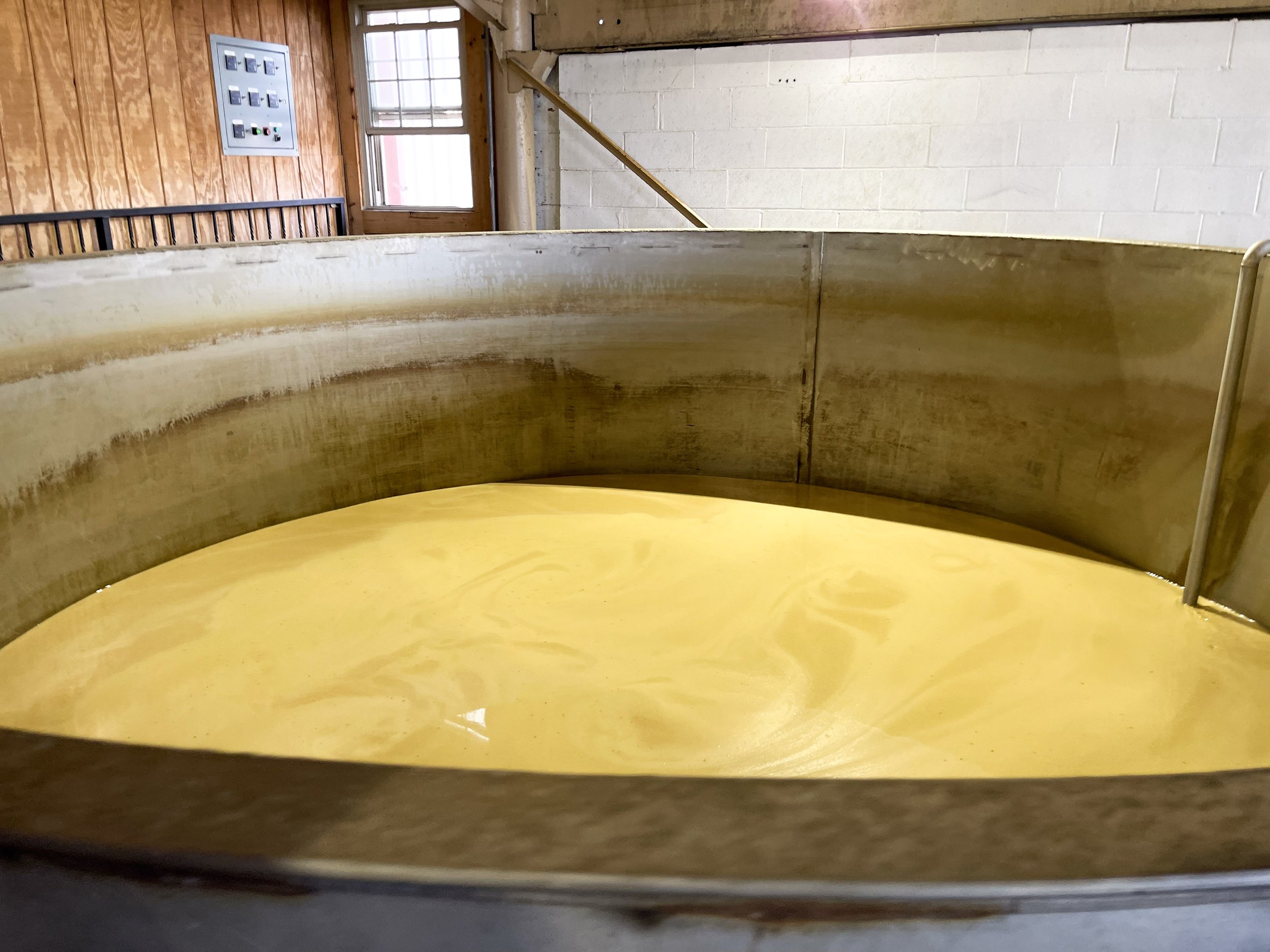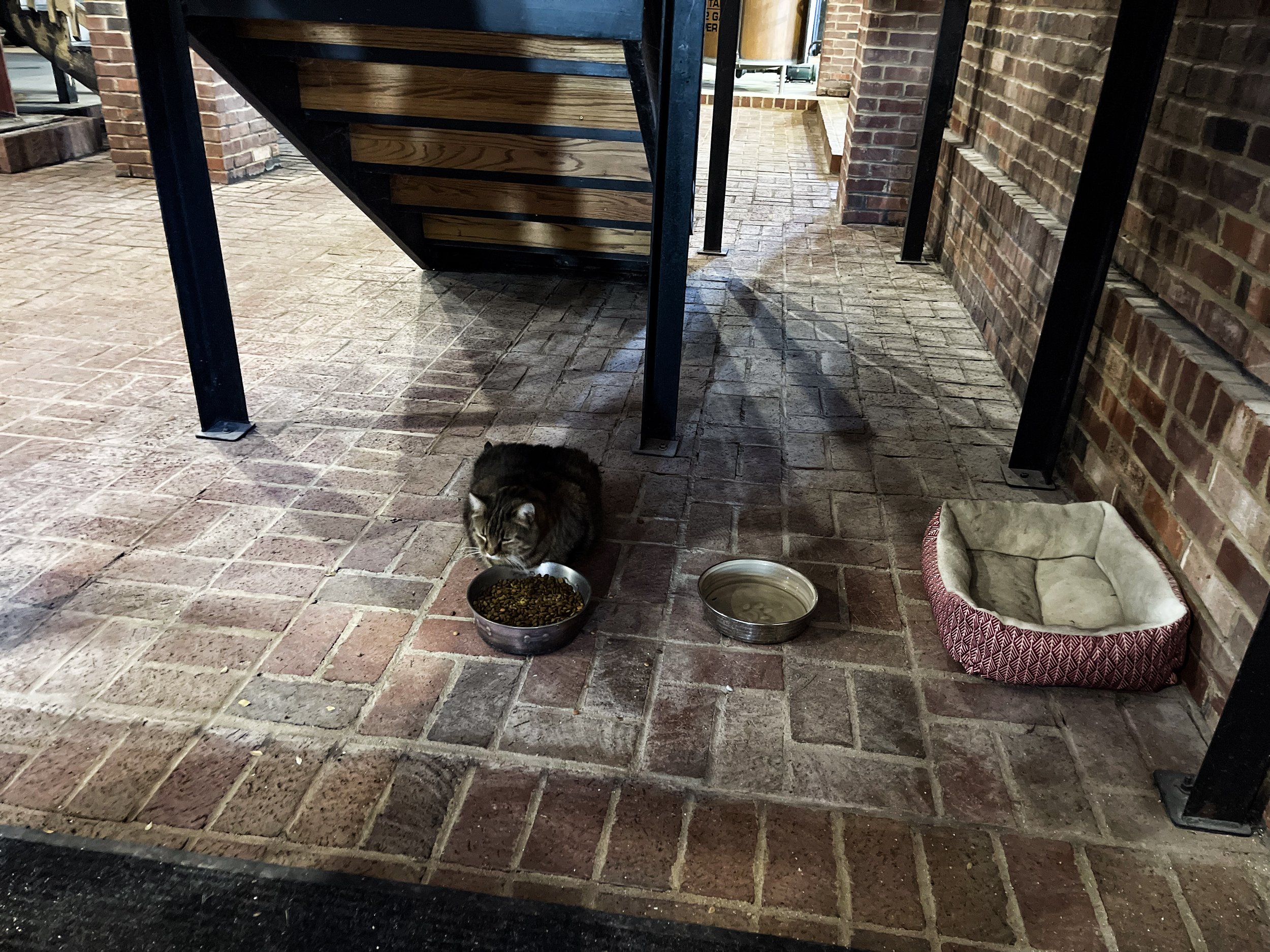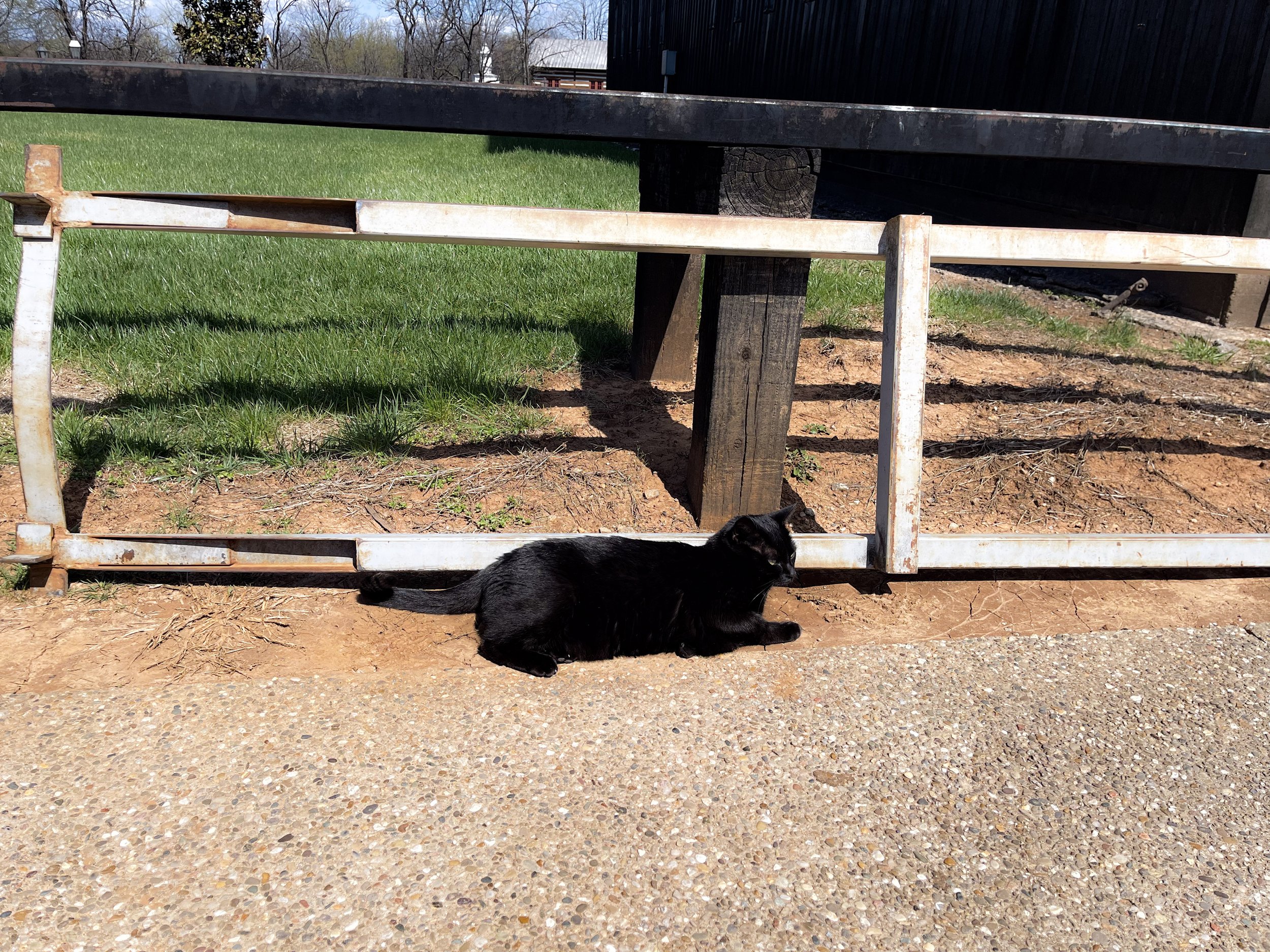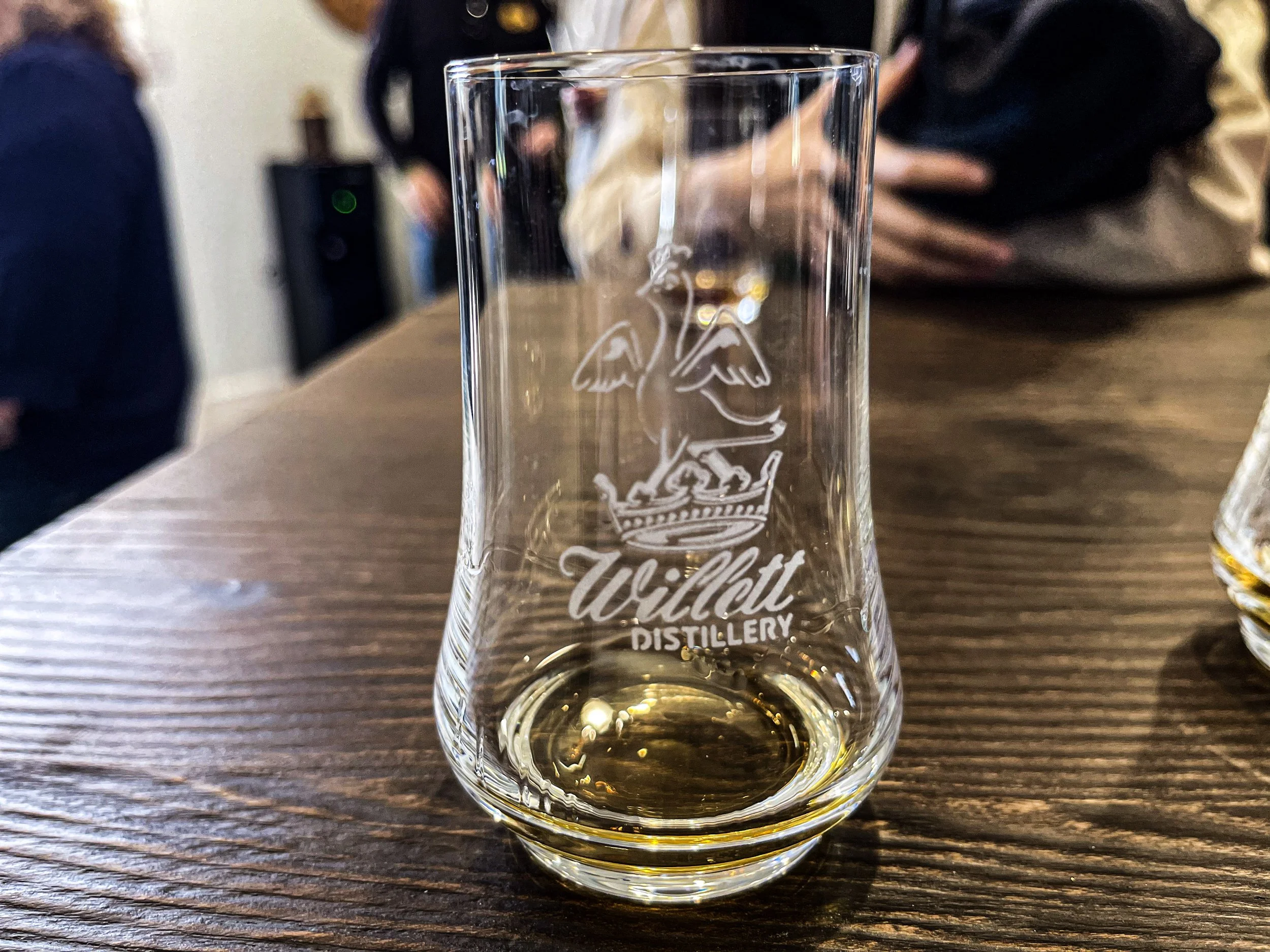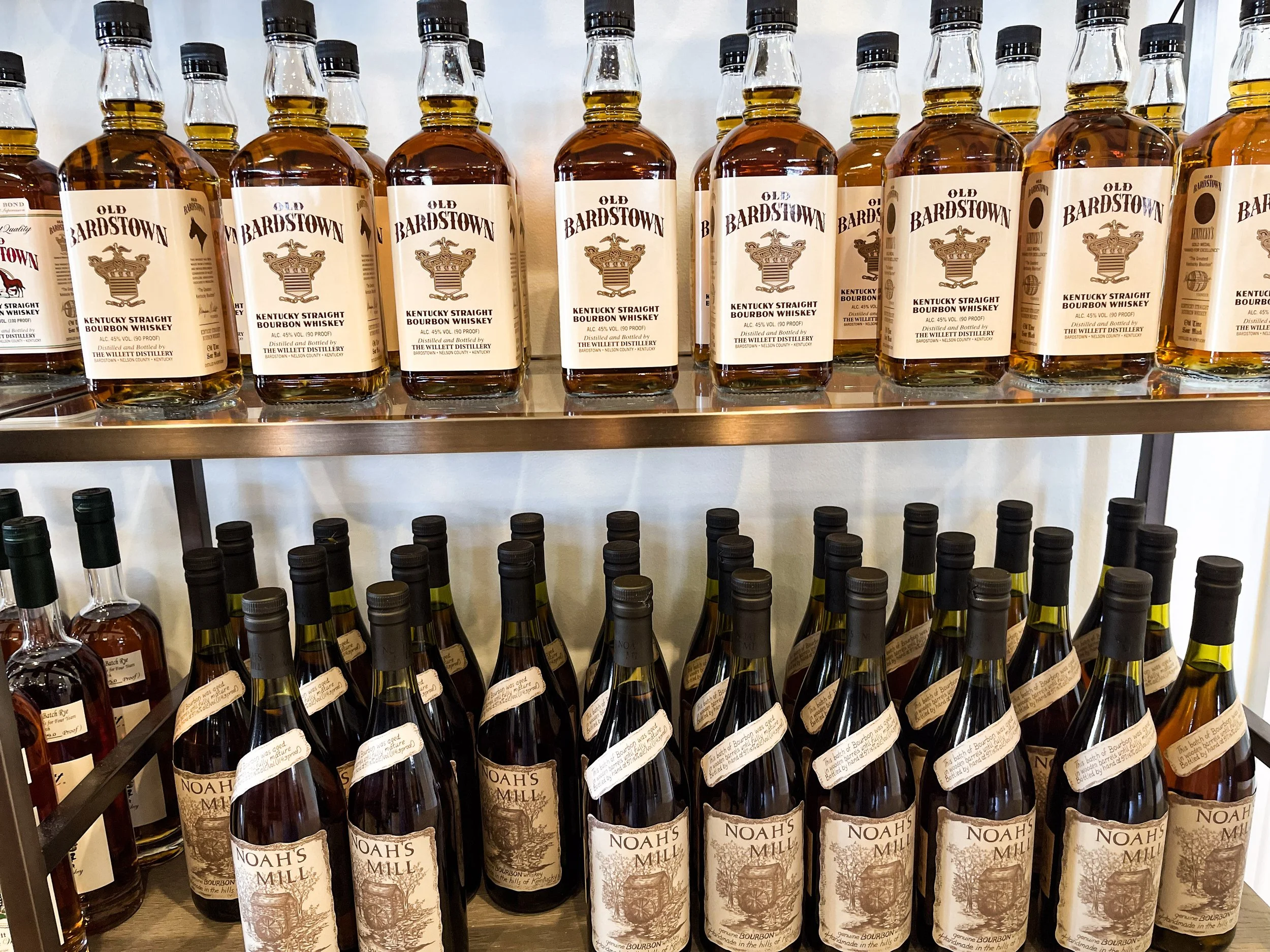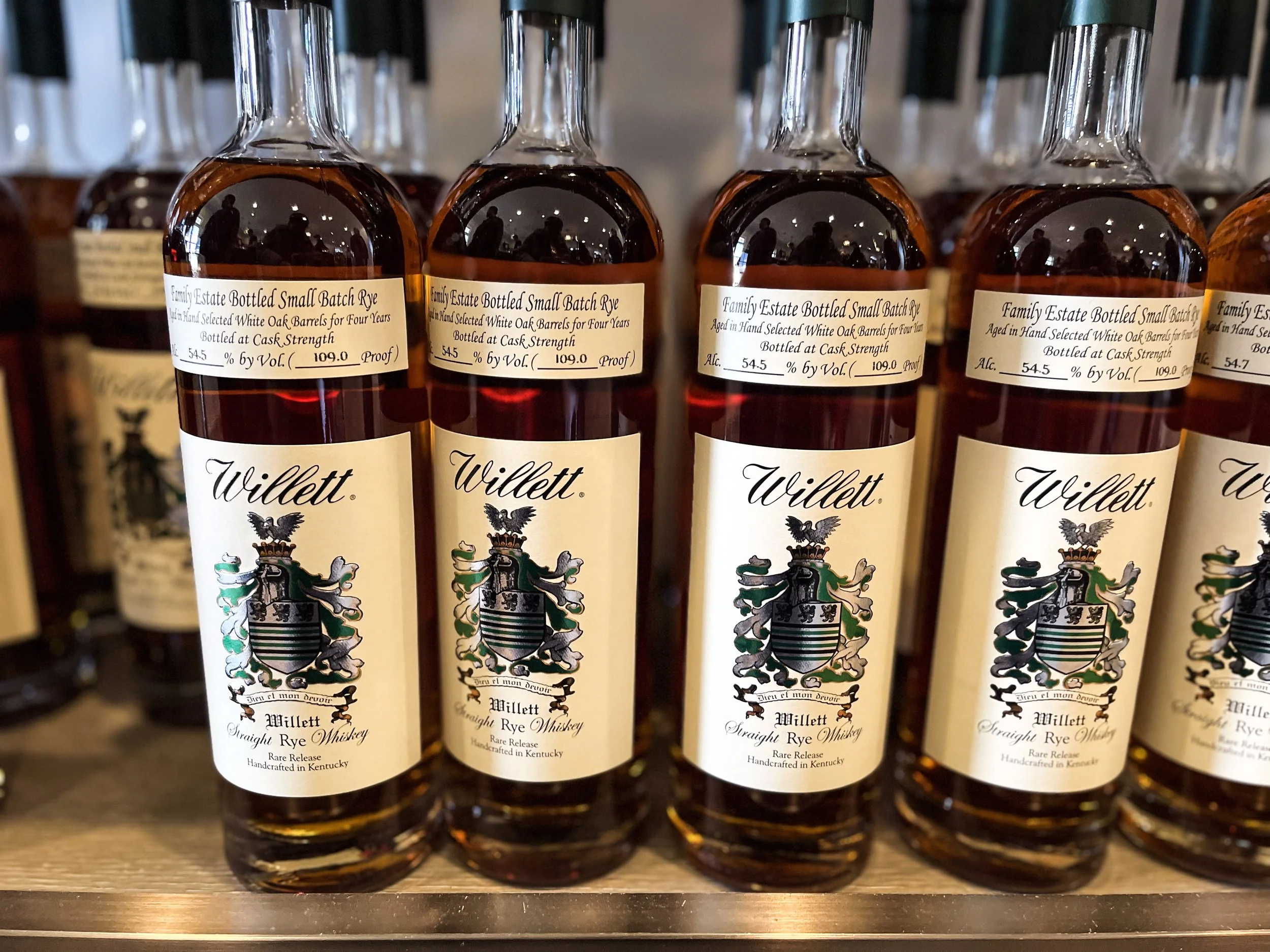Visit the Family-Owned Craft Distillery–Willett
Willett Distillery Tour- A family-owned distillery since 1963
Taken through the distillery by our tour guide, Ann, we began a refreshingly informal tour, where we tasted their bourbons through each destination.
On our first stop, a room adjacent to the gift shop, we tasted Willett’s flagship bourbon, their Pot Still Reserve. Comprised of malted barley, corn and wheat, this bourbon was aged 5-7 years and sits at 94 proof. We were given a Glen Caren glass with the Willett bird present on the front, that we were able to use throughout the tour and keep after.
Even Kulsveen and his son, Drew designed Willett’s one of kind pot still. It took 7 years to build. Their bottle for the Willett Pot Still Reserve Bourbon is modeled after it. A company in Italy makes the bottles for them.
9,000 people visited last year Willett in the past year, as this craft distillery, a family owned company, continues to grow and expand, but it wasn’t always frequented. In fact, there was a time when they were about to close their doors.
In 1936, Thompson Willett owned the distillery. The family broke ground on their farm, just three years after prohibition was repealed.
This distillery is housed on 120 acres, sitting on highest point in Nelson county. It’s great for maturation in barrels. Willett fills 50-70 barrels a day with 25,000 barrels filling their 9 warehouses. The first 8 warehouses were built in 1935-60s, but the 9th was erected in in Jan 2021.
“Unique, anitique and boutique. Everything is the same since 1936,” says Ann, saying she’ll prove the truth to that statement throughout our tour.
Willett Distillery sat empty in the 80s, due to lack of bourbon sales. The property was leased to ethanol company, then rebought in 1984, when Even and Martha Kulsveen, the daughter of Thompson Willett, regained control.
However, they could not reopen till nearly 30 years later, in 2012, here’s why:
In 1984 they weren’t sure if bourbon boom would come back, they were waiting and wanted to spend out of pocket, without bringing on a partner. In that time, they bought barrels, blended and aged local distillate and sold it to over sea markets.
At Willett, everything is done on site: Distillation, aging, bottling, shipping. They project five years in advance how many bottles they’ll need. Also, when bottling, workers can’t wear perfume, to avoid mixing scents.
Willett distills their distiller’s beer, made from their mash, twice, through two different mechanisms. The first distillation, achieving low wine, is conducted everyday out of their beige building. To achieve high wine, they use their pot still.
Our second tasting was Old Bardstown, Thompson Willett’s flagship bourbon. In fact, Bardstown, was the name of his best friends’ horse.
The Old Bardstown labels are same as they were in the 40s and 50s. Old Bardstown consists of three labels: Old Bardstown, Old Bardstown Bottled-in-Bond, and Old Bardstown Estate Bottled.
We were given a chance to taste one of the three, but of course we shared and were able to taste all three.
The first, Old Bardstown, sits at 90 proof. It has notes of caramel, oak and vanilla aged and was my, personal favorite of the three.
The Bottled-in-Bond had notes of cherry, candy, and cinnamon. It follows the Bottled-in-Bond restriction of being aged at least 4 years, 100 proof and being bottled in the same season. It is only distributed in Kentucky. This bottle won an award for being the best bargain. Jordan enjoyed this one the most.
Our last of the Old Bardstown, is their Estate Bourbon, which is aged 6 years, sitting at 101 proof. It was described as smoky, which accurately packs a punch.
Willett sources their corn and wheat Peterson farms housed 22 minutes away in Loretto, KY. Their malted barley and wheat comes from Canada.
Willett has 6 mash bills, 4 bourbons and 2 rye.
Their mash takes 4-6 hours to cook. It’s combined in 10,000 gallons stainless steel tanks. We were offered to reach in and taste the mash, a bland mush of grain.
All of their tanks have open lids. They enter the same yeast strand. After distillers beer is made, they pump the liquid into a holding tank, then to a 60 ft column still. This creates the sour mash. A portion of grain is used for backset for the next mash bill, the rest, is returned to farmers.
Currently, Martha Kulsveen, Thompson Willets’ daughter and her family owns the distillery. Her daughter, Britt, is the President and Chief Whiskey Officer and her son, Drew is the Master Distillery and master Blender. He’s been nominated 5 times for James Beard award for Master Blender.
There are 3 cats who live on property: Noah, Wednesday, Rowan. Wednesday, a black cat, named after Wednesday Addams, was extremely friendly as she joined us on our tour an into the warehouses.
Inside the warehouse we tried Rowan’s creek. Resting at 101.1 proof, it’s Drew’s favorite and Jordan’s favorite out of the whole Willett lineup. With notes of toffee, caramel, vanilla, it was a sweeter bourbon that was nice on the pallet.
Willet’s unique practices date back to their origin in 1963. Using an original cistern, they fill up every single barrel, that they source from Lebanon. Willett uses a Level 4 char, lit for 54 sec. These 53 gal. barrels are closed with a poplar wood, bing. All barrels are weighed with original scales, each weighing 510-530 lbs. Copper stencils are used to enter the barrel identification, including the KY 78. With all of the KY distilleries, the number goes to 20,000.
The fill date is added: year, month, and date. March 27, 2023 would be read as 23 C 27. Barrels rolled out and put in the truck to put in the rackhouses. Windows are opened end of March to November to assist with aging to 25-30 degrees. None of their warehouses are climate controlled, “It’s all Mother Nature,” says Ann.
For Willett, known as a craft distillery, every bottle is small batch combining 25-30 barrels to fill bottles. They recently broke ground in Nov 2022, to build more warehouses, a visitor center, and a distillery. Their used barrels get sent to mid west barrel company and sold to other beer or wine companies. Since they empty their bottles by hand, rather than using a vacuum, companies love purchasing their barrels because there’s always a little left over bourbon.
Our last tasting was back in the Visitor Center. We were offered dark chocolate with toasted chia seeds to pair with our pick of two whiskeys of Kentucky Vintage, Johnny Drum, Pure Kentucky, Noah’s Mill or the Small Batch Family Estate Rye.
The Kentucky Vintage, at 90 proof, was light and smooth and buttery. It’s a good choice to enter into bourbon with.
The Johnny Drum, a rye forward bourbon, was a delicious 101 proof with a peppery finish.
Pure Kentucky, with sweet flavors of caramel was “our hug to you,” said Ann. At 107 proof, this was my all around favorite.
The Noah’s Mill, President Britt and Ann’s favorite is 114 proof. “It’s a trouble maker because it’s so smooth,” said Ann. “It’s very complex: sweet, floral, spicy, and earthy.”
The Small Batch Family Estate Rye, at 109.8 proof, was another of Jordan’s favorite. This single barrel cask strength rye is what Willett’s bar tenders use in a Manhattan cocktail.
We love the colonial style visitor center as well as their tried and proven methods to distilling and aging. We can’t wait to see Willett grow in recognition and size as their expansion continues.
Fact: Willet doesn’t rotate their barrels.
Fact: Their lake is used as fire suppression, in case of fire. The distillery is equipped with pumps and lighting rods.
Fact: Willett has a restaurant and bar open Wed- Sat.
Fact: Their mixologists make their own ice and brand it in an ice house.
Fact: They have their own cafe.

